This content originally appeared on The Real News Network and was authored by The Real News Network.
This post was originally published on Radio Free.
This content originally appeared on The Real News Network and was authored by The Real News Network.
This post was originally published on Radio Free.
This content originally appeared on Human Rights Watch and was authored by Human Rights Watch.
This post was originally published on Radio Free.

Reference: Chosen Trauma and Terrorism: The Jewish Victim Narrative
The purpose of this research paper was to investigate the justification of Jewish terrorism against the Palestinians, through the lens of chosen trauma. Through qualitative research, it was deduced that chosen trauma is the result of victimization and large-group identity. Hence, the psychological domain of collective victimhood and Sigmund Freud’s Group Psychology were employed to elaborate on this concept. It was deduced that the process and acceptance of victimization are dynamic and are a result of stages since it calls for the collective recognition of trauma by large groups. Large group identity becomes stronger upon attacks or threats from external groups, and attacks generate collective victimhood. The resulting concept is that; the perceived harm is stored in the collective memory of large groups, and they aspire to seek revenge. It was also presented that, shared tragedy is transmitted through generations by virtue of “depositing”. The psychological domain of transgenerational transmission of trauma argues that through depositing, the parties become free of the traumatic images and deal with their mental conflicts. The result is chosen trauma, whereby a collective sense of entitlement for the purpose of recovering from ancestral collective trauma is reflected. Along these lines, the Jewish Holocaust survivors passed down the trauma of concertation camps, torture, and sexual violence across generations. Present-day Jews aspire to avenge the Holocaust by maintaining domination over Jerusalem and current Israeli land. As a result, the Palestinian community which challenges the aspiration of Jews is a victim of state-sponsored terrorism.
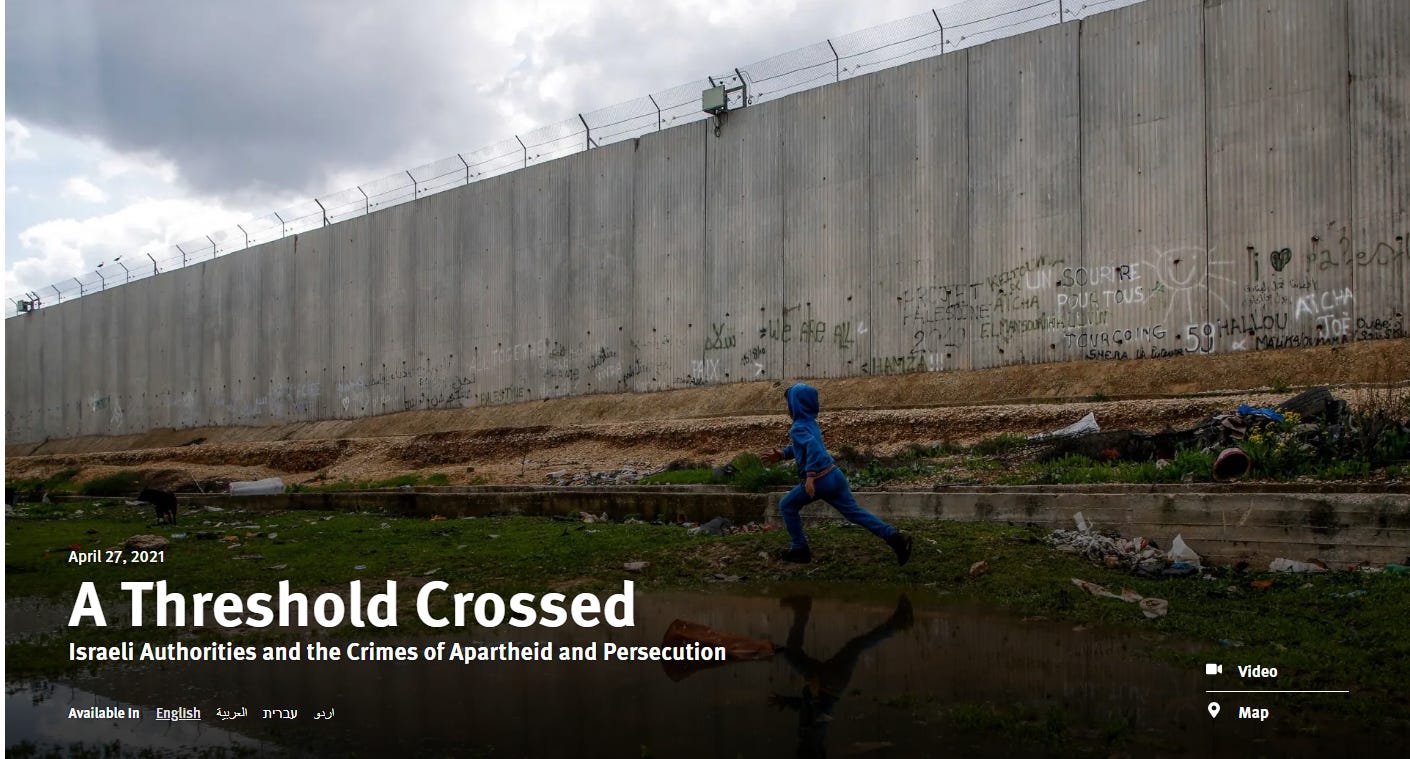
In retaliation, Palestinians are victims of expulsions, killings, military occupation, forced detention, war crimes, and human rights violations. Despite being called out by various international organizations, Israel is able to justify its actions under the realm of chosen trauma. Hence, the notion of chosen trauma is employed to justify Jewish atrocities against the Palestinians.
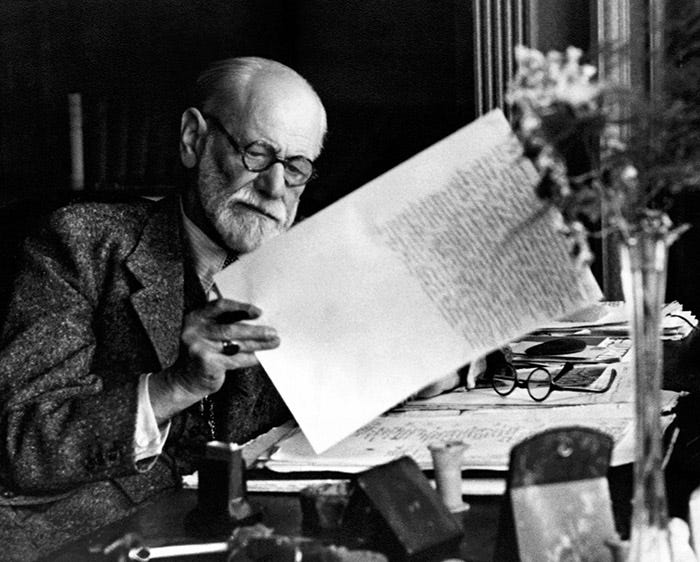
But Freud testified that “my father allowed me to grow up in complete ignorance of everything that concerned Judaism.” Some scholars have made much of the fact that Jacob once gave his son a Bible with a Hebrew inscription, but when the adult Freud was given a book with a Hebrew message, he replied that he was entirely unable to read it. The belief that one’s children would be more burdened than fortified by Jewish knowledge was shared by many Jewish parents in the nineteenth and twentieth centuries, in Brooklyn and Tel Aviv no less than in Vienna.
As for religious faith, Freud of course had none, identifying on occasion with Jewish unbelievers like Heinrich Heine and Baruch Spinoza. A strict rationalist, he theorized in The Future of an Illusion (1927) that the origins of religion lay in “the terrifying impression of helplessness in childhood,” which “aroused the need for protection—for protection through love—which was provided by the father.” God is the imaginary father adults call on to avoid confronting “the full extent of their helplessness and their insignificance in the machinery of the universe.” But “men cannot remain children forever,” Freud says, demanding that we emancipate ourselves from faith.
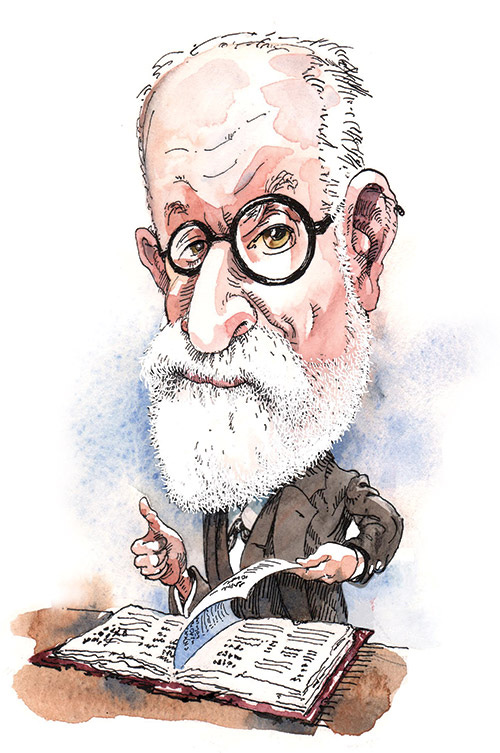
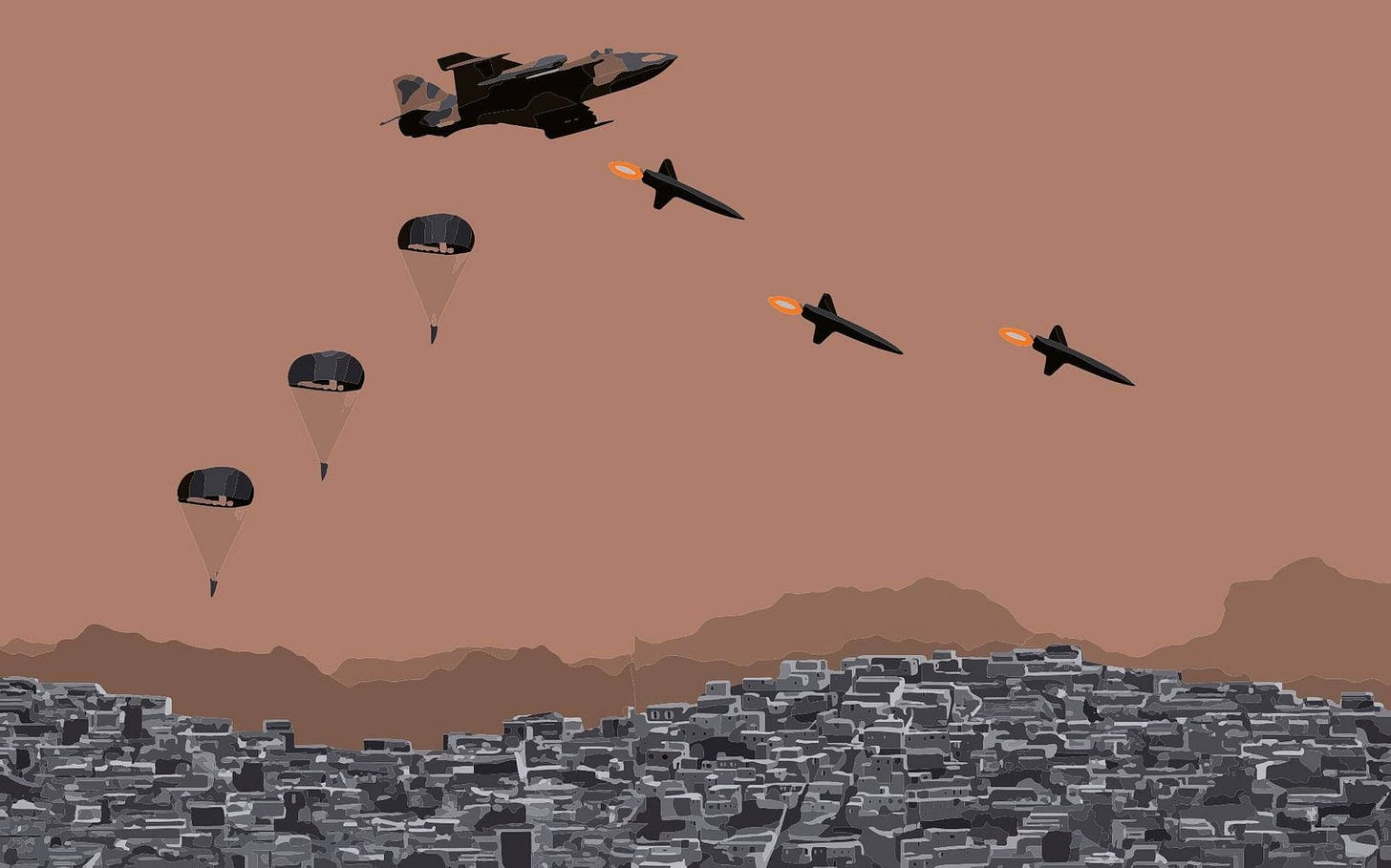
The Oxford Dictionary defines a “tragedy” as a play “concerning the downfall of the main character”. This main character is often referred to as the “tragic hero.” “Tragic heroes typically have heroic traits that earn them the sympathy of the audience, but also have flaws or make mistakes that ultimately lead to their own downfall.”
Literature is littered with tragic heroes — beginning with Lucifer of Judeo-Christian mythology, later Shakespeare’s Macbeth, Camus’ Clamence, and more recently Walter White of the TV series Breaking Bad. And so is real life: US President Richard Nixon, actor Bill Cosby, and cyclist Lance Armstrong. All people who gained support, success, fame, admiration, and power — only to lose it all because of the abuse of that power. Sometimes the tragic hero can be a nation.
The eyes of the world have watched the unfolding story of Israel over the past 75 years. What many saw as an inspirational tale in its early years has slowly turned into a tragedy — and the hero into a bully.
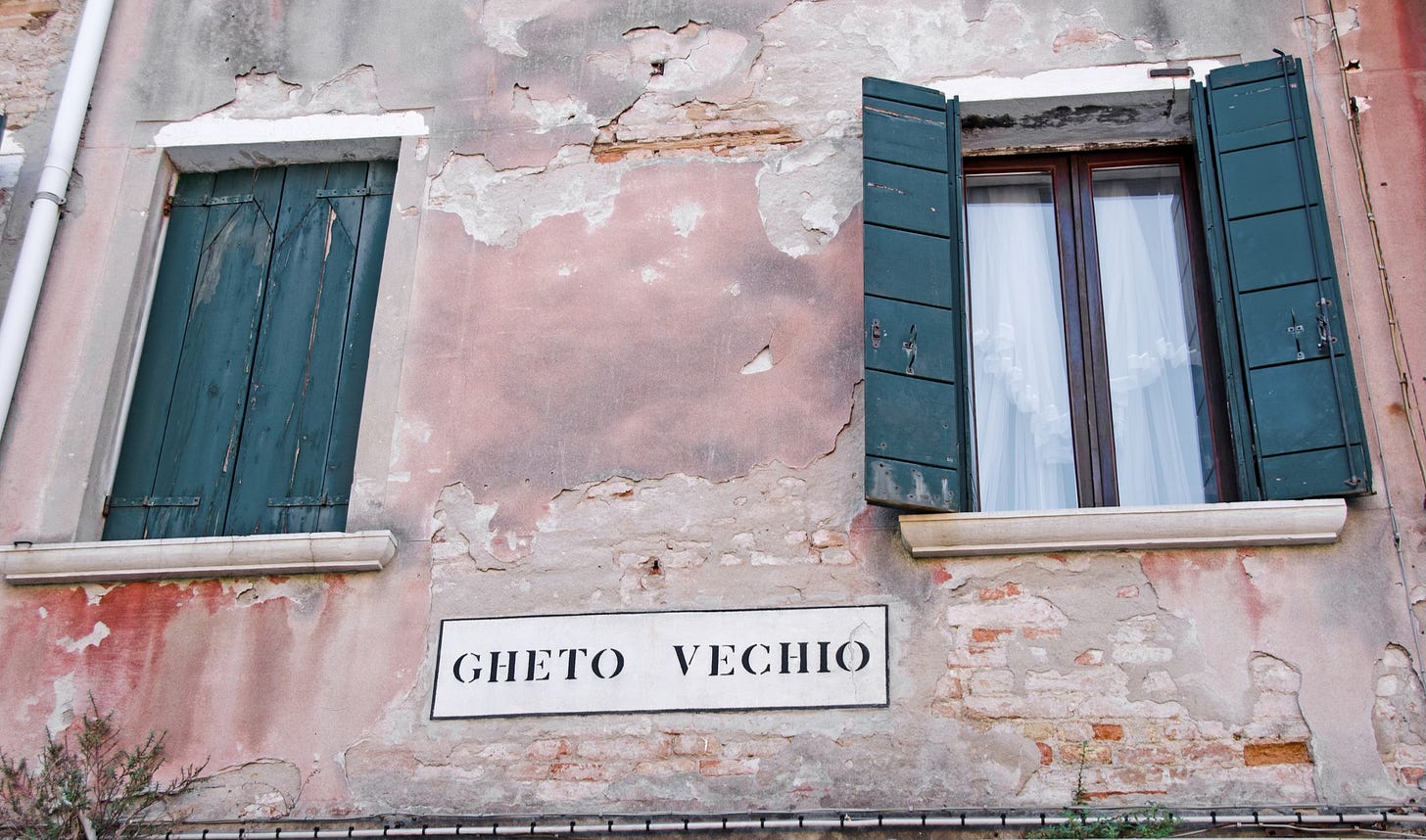
Bad bad Jewish New York Confused Writing, “almost” ALWAYS: A Jewish Stance of Eternal Victimhood Fails Us All — The suffering of Jews doesn’t mean that Jews can’t make others suffer.
I grew up in the shadow of the Holocaust in a mainly Jewish community in New York. There were also South Africans who’d fled apartheid, as well as Persian Jews who’d been forced out of Iran after the Shah fell. Fleeing oppression tends to create an open-minded, liberal community — one that I have been proud to be part of traditionally, if not religiously — or, conversely, it can create a community that dangerously closes ranks, which I find particularly telling today when looking at what Israel is perpetrating in Gaza.
These effing so-called Jewish and Liberal New Yorkers are Bonkers in Yonkers: above quote.
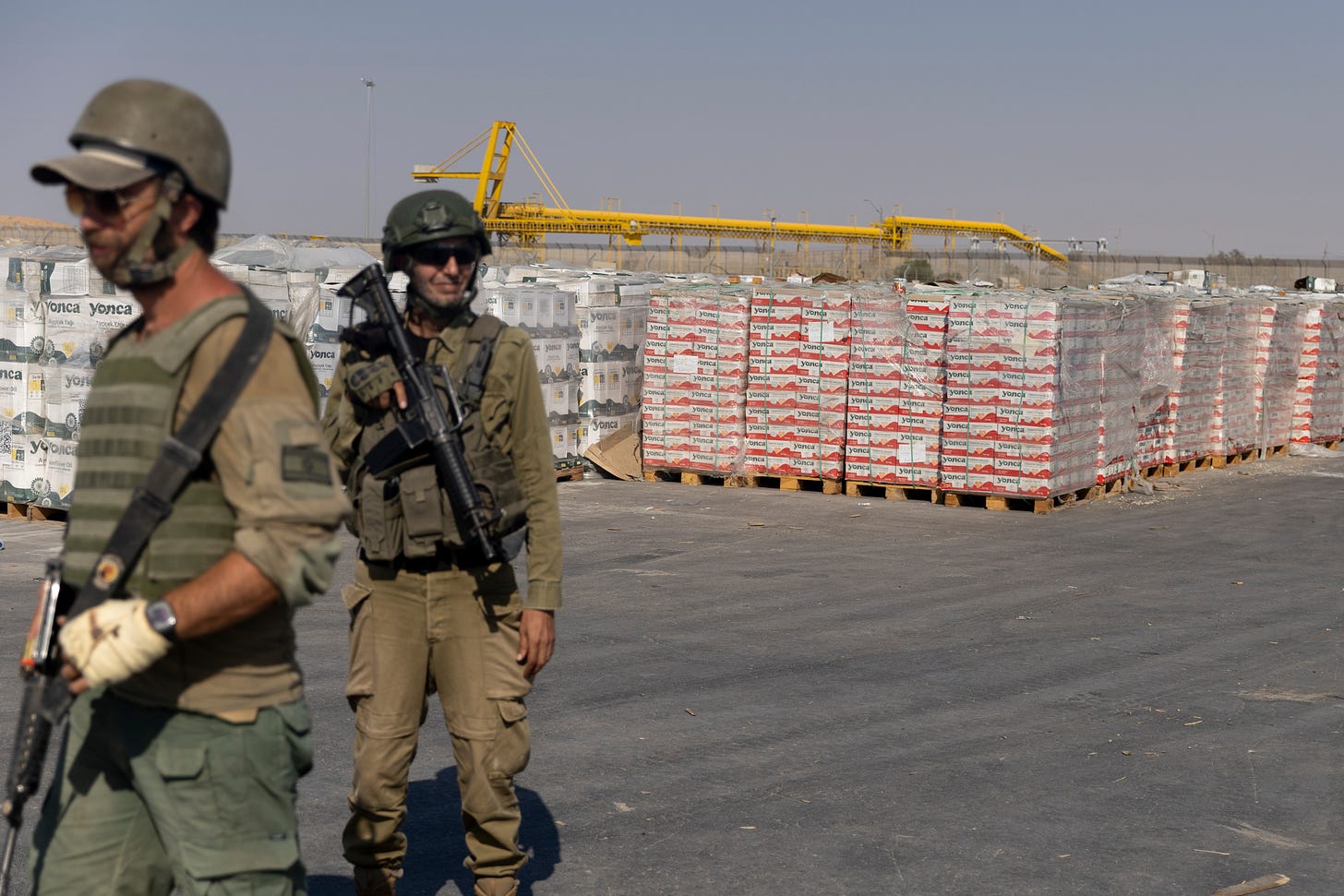
The Israeli government has pivoted to a new deflection: The famine in Gaza is not the result of Israel’s publicly announced March 2 blockade of all food entering Gaza, nor is it connected to the Israeli- and U.S.-backed Gaza Humanitarian Foundation (GHF), which replaced the UNRWA aid system Israel shut down with its own militarized version in late May. Instead, according to the new Israeli campaign, the blame lies with the United Nations. “Hundreds of aid trucks have entered Gaza with Israel’s approval, but the supplies are standing idle, undelivered,” the Israeli Ministry of Foreign Affairs declared on X. “The reason? The UN refuses to distribute the aid.”
Clearly sensing a turning-point in world opinion, as the death toll from starvation mounts exponentially in Gaza, Israel brought dozens of sympathetic journalists to a crossing to wage a PR campaign on Thursday.

Comment on X: Bushra Shaikh — You haven’t let any International Journalists into Gaza freely since the aggression began. So IDF-controlled journalists in a 2-hour tour is not journalism. Try again, rabid liars.

Oh, more than rabid liars. Rabid misanthropes, and they turned the Vice President into this glorifying Dipshit Faux Man, and what and who are these journalists who won’t attack the Vice President and President Trump or his POTUS: Adolph “bibi” Mileikowsky.
Myriam François sits down with journalist Ahmed Shihab-Eldin to confront the media’s complicity in power — and the price of telling the truth. From abused children to erased journalists, this is a brutal exposé on how mainstream media narratives are shaped, sanitised, and sold. We break down how coverage of Gaza and Palestinian lives is distorted — and why “mistake” is the media’s favourite euphemism for mass murder.

Nah, Jewish folk don’t control the White Man’s House and Minyan, or Higher Education:
Hudson Whittaker was a Chicago blues musician who performed under the name Tampa Red. One of his finest compositions, entitled “Don’t Deal with the Devil,” opens with the following warning:
When you dealin’ with the devil
Everything you do is wrong
You’ll drive away your lover
And keep all your things in pawn…
Don’t deal with the devil, cuz it ain’t no way to win.
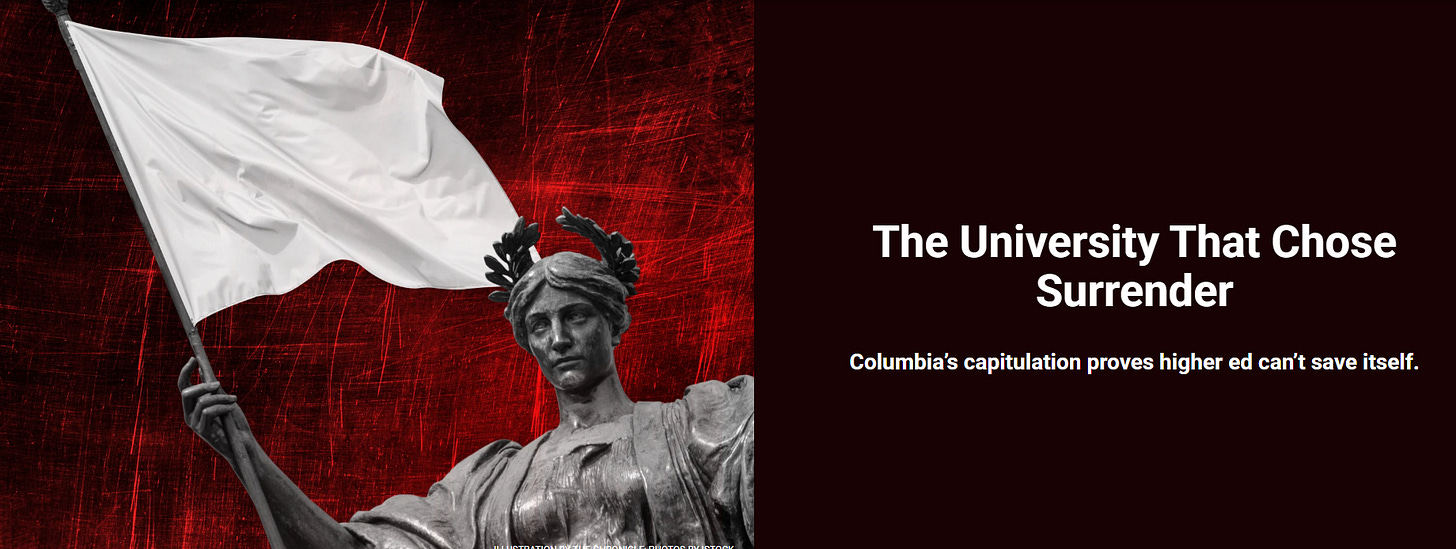
Zionist Jews are the Collective Devil:
Fucking Military Industrial Complex and so-called Business Chlamydia Capitalism Schools:

Stanford Graduate School of Business, long considered among the most elite MBA programs in the world, is facing a storm of internal criticism from students who say the academic experience has fallen far short of expectations. In a series of interviews with Poets&Quants, current MBA students voiced concerns about outdated course content, a disengaged faculty culture, and a broken curriculum structure that they say leaves them unprepared for post-MBA careers — and worse, dilutes the reputation and long-term value of a Stanford degree by producing scores of grads unprepared for the modern world of work.
“We’re coming to the best business school on Earth, and the professors can’t teach,” says a rising second-year MBA student and elected member of the school’s Student Association. “We’re not learning anything. The brand is strong, but there’s nothing here to help you build discernible skills.”

Albino head of the War Lord’s SNAKE:
“I firmly believe that the technology that we need to deliver Golden Dome exists today.”
Yep, there goes the neighborhood: A draft of President Dwight D. Eisenhower’s farewell address shows changes made around a reference to the military industrial complex at the Eisenhower Presidential Library in Abilene, Kansas, the U.S., December 10, 2010.

The head of the Trump administration’s Golden Dome program says the technologies needed to create an ambitious space-based missile defense system are already in existence.
U.S. Space Force General Michael Guetlein, Vice Chief of Space Operations, was tapped by President Trump to lead the Golden Dome project on May 20 and was confirmed by the U.S. Senate on July 17. His role will be to oversee the development and procurement of technologies for Golden Dome, a planned missile defense system that can shoot down incoming hypersonic, cruise, and ballistic missiles from space.
This is devolution. Apartment Buildings Bombed.
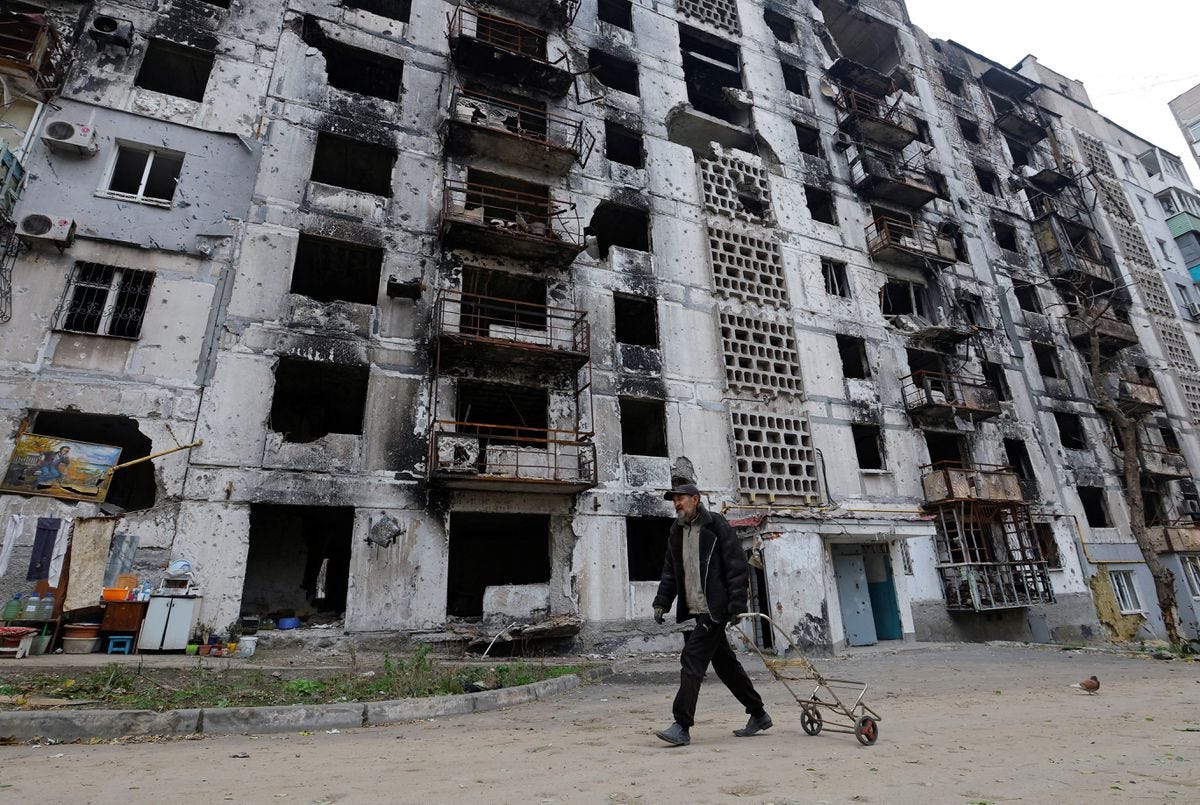
“American-style democracy advocates that everyone has one vote, but ordinary voters simply cannot compete with the campaign investment paid by the big financial groups in the military-industrial complex,” said Zhang Tengjun, deputy director of the China Institute of International Studies Asia Pacific.
Another powerful tool of the military-industrial complex is its ability to shape elite discussions on national security issues by funding foreign policy think tanks.
At least 14 of the 15 think tanks represented in House Armed Services Committee hearings from January 2020 to September 2022 accepted arms industry cash, according to “US government and defense contractor funding of America’s top 50 think tanks” report by Bee Freeman, a research fellow with expertise in lobbying and money in politics at the Quincy Institute for Responsible Statecraft.
“Think tanks are supposed to shape government policies in an unbiased manner, free from the influence of big money that can distort in-house policy planning,” said Stephen Semler, cofounder of Security Policy Reform Institute, a grassroots-funded U.S. foreign policy think tank.
However, many of the most influential think tanks have been compromised by the same financial interests as Congress, including military contractors, Semler argued.
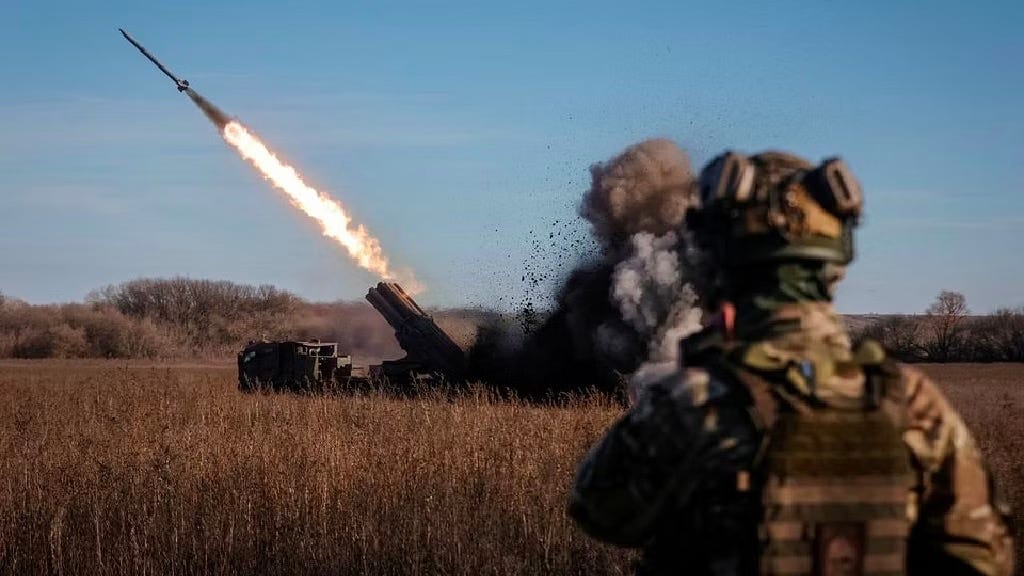
Weapons contractors are the main financial beneficiary.One-quarter to one-third of all Pentagon contracts in recent years have gone to just five major weapons contractors, including Lockheed Martin and Boeing, according to research from the Watson Institute at Brown University.
The direct military sales by U.S. companies rose nearly 50 percent in fiscal year 2022 from the previous year, data released by the U.S. State Department shows.

Deaths and injuries from such wars have reached the tens of millions. The number of estimated deaths from the post-9/11 wars in Afghanistan, Iraq, Pakistan, Syria, and Yemen is eerily similar to that from the wars in Vietnam, Laos, and Cambodia: 4.5 million.
The numbers are so large that they can become numbing. The Irish poet Pádraig Ó Tuama helps us remember to focus on:
one life
one life
one life
one life
one life
because each time
is the first time
that that life
has been taken.
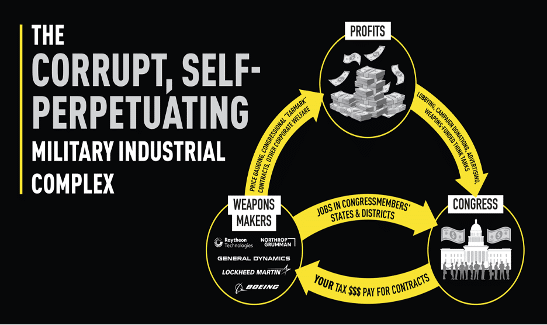
As the MIC has fueled wars abroad, so it has fueled militarization domestically. Why, for example, have domestic police forces become so militarized? At least part of the answer: since 1990, Congress has allowed the Pentagon to transfer its “excess” weaponry and equipment (including tanks and drones) to local law enforcement agencies. These transfers conveniently allow the Pentagon and its contractors to ask Congress for replacement purchases, further fueling the MIC.
Seeking new profits from new markets, contractors have also increasingly hawked their military products directly to SWAT teams and other police forces, border patrol outfits, and prison systems. Politicians and corporations have poured billions of dollars into border militarization and mass incarceration, helping fuel the rise of the lucrative “border-industrial complex” and “prison-industrial complex,” respectively. Domestic militarization has disproportionately harmed Black, Latino, and Indigenous communities.
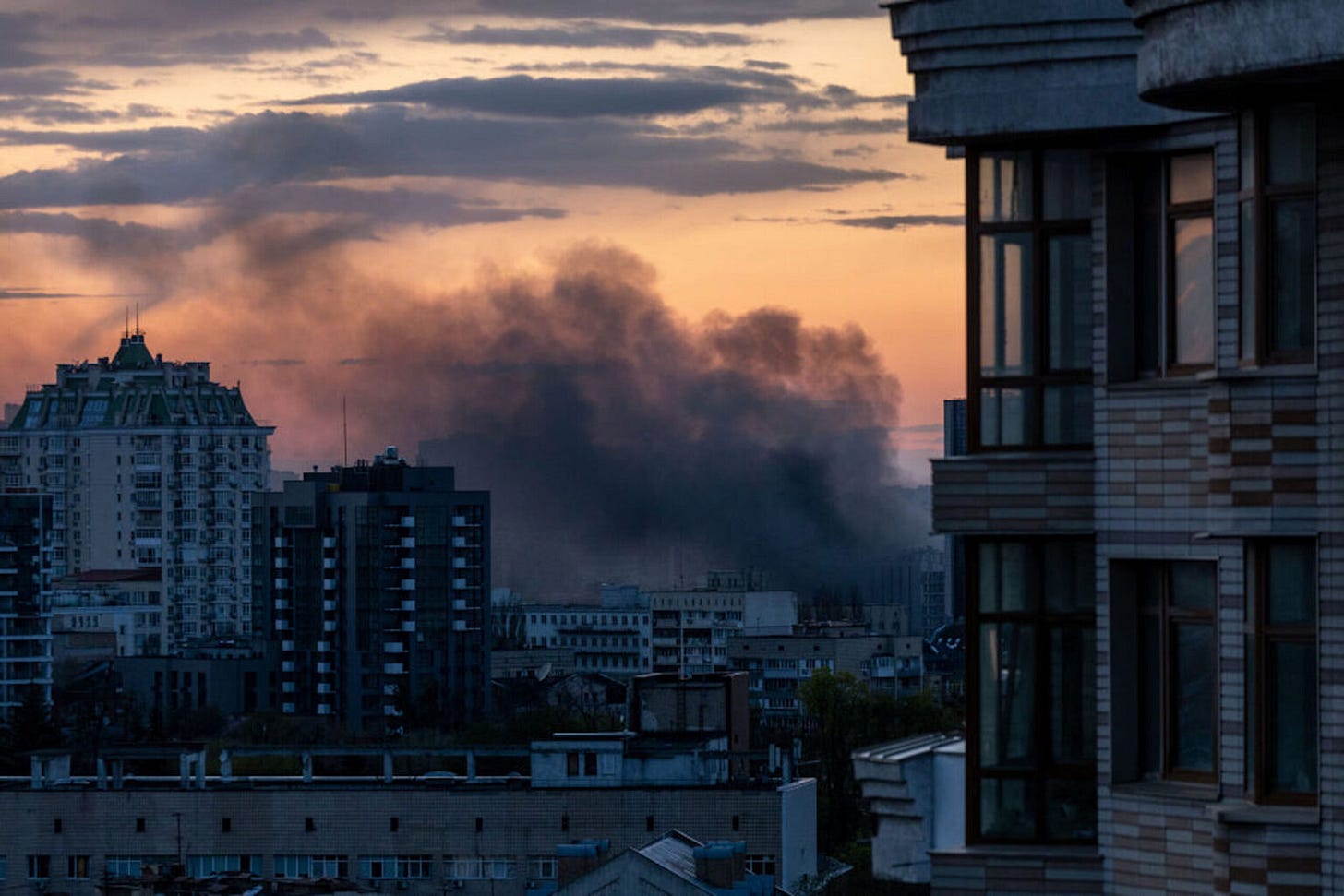
You think? Reducing military spending would rein in U.S. debt and improve global security
What’s missing? All the defunding and tax payer coffer smash and grabs: Education, roads, bridges, medical clinics, rural doctors, health care for all — single payer — public transportation, more parks, less clear cutting and mountaintop removal, mitigating all the destruction caused by US industries (microplastics, poisons, forever chemicals, disease, CAFOs, fenceline communities), arts, sciences, ecology and marine and estuary restoration, wildland fire fighting, ocean inundation, wet bulb temperature deaths and stress, and MORE MORE MORE.
What’s dragging down and/or missing in your community? Too many pigs/cops? ICE raids? Cost of housing or lack thereof?
An end to this?

Watch: “It’s exhausting” – Epstein accuser talks to the BBC about files saga
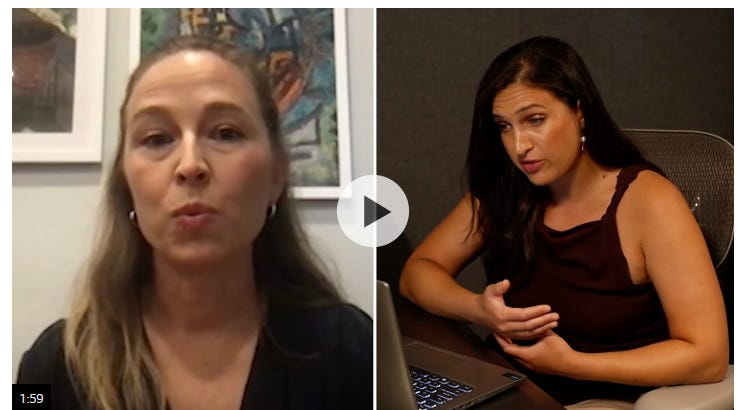
And so the Jewish Project toward Gazafication and Israelification of the world continues:
The liberal establishment gave outsized attention to Colbert compared to the increasingly dire hunger in Gaza.
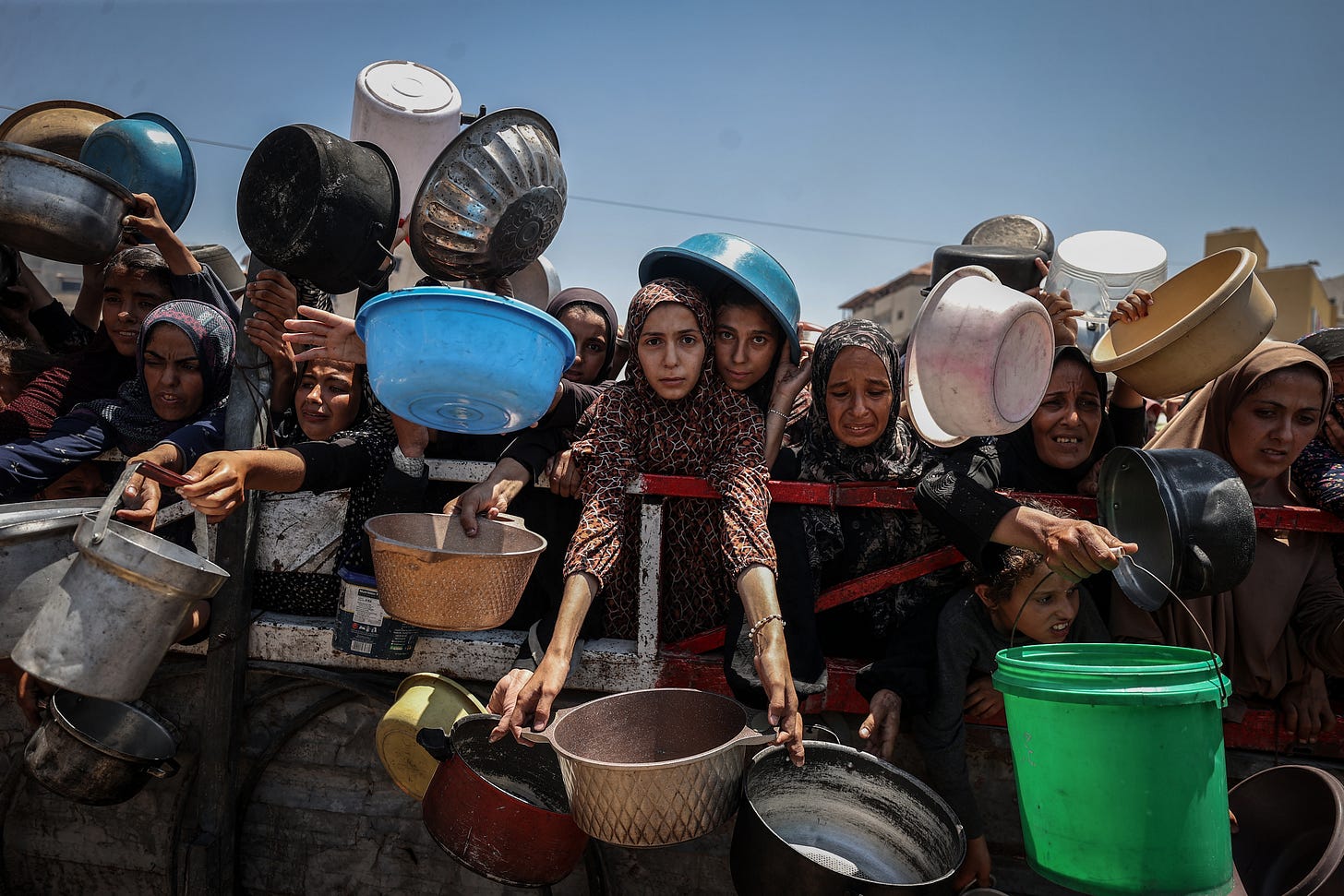
A perfect fucking target. Oh, Larry Silverstein is on the job, after his billions in bilking 9/11 and the Jewish and Israeli insurance scam:
Concept for postwar Gaza from the project “Great Trust” in which the Tony Blair Institute participated to develop a postwar Gaza plan that envisaged kick-starting the enclave’s economy with a “Trump Riviera” and an “Elon Musk Smart Manufacturing Zone.” It proposed paying half a million Palestinians to leave the area and attracting private investors to develop Gaza..

Yeah, business schools?
In her 60-page report, Albanese writes that her research “reveals how the forever-occupation has become the ideal testing ground for arms manufacturers and Big Tech… while investors and private and public institutions profit freely.”
Her point was underscored by the Israeli arms firm Rafael, which issued a promotional video of its Spike FireFly drone that showed it locating, chasing and killing a Palestinian in what it called “urban warfare” in Gaza.
As the UN special rapporteur points out, quite aside from the issue of genocide in Gaza, western companies have been under a legal and moral obligation to sever ties with Israel’s system of occupation since last summer.
That was when the world’s highest court, the International Court of Justice, ruled Israel’s decades-old occupation was a criminal enterprise based on apartheid and forcible transfer—or what Albanese refers to as policies of “displacement and replacement.”
Instead, the corporate sector—and western governments—continue to deepen their involvement in Israel’s crimes.
It is not just arms manufacturers profiting from the genocidal levelling of Gaza and the occupations of the West Bank and East Jerusalem.
Big Tech, construction and materials firms, agribusiness, the tourism industry, the goods and services sector, and supply chains have also got in on the act.
And enabling it all is a finance sector—which includes banks, pension funds, universities, insurers and charities—keen to continue investing in this architecture of oppression.
Albanese describes the mosaic of companies partnering with Israel as “an eco-system sustaining this illegality.” — Israel’s Genocide Is Big Business And It’s The Face Of The Future

One of my Substack followers mentioned how I didn’t have a rant against the Jews of Murdering Maiming Occupying Raping Starving Poisoning Thieving Israel that day. Shit dawg, there’s always room for more critiques of Jews.

The Washington Post reported that, in the wake of Albanese’s report, Google’s co-founder, Sergey Brin, called the UN “transparently antisemitic” in a chat on a staff forum.

Dirty languages of the white races:

Educator, musician, activist, and creator of First Voices Radio, Tiokasin Ghosthorse. Tiokasin is a member of the Cheyenne River Lakota Nation of South Dakota, and shares deep wisdom from the Lakota worldview, language, and traditions.
He explores ways for us to redefine our relationship with Mother Earth, moving away from a mindset of separation and domination towards one of interconnectedness, mutual becoming, and intuition. Tiokasin shares how we can be more in tune with Earth’s natural rhythm to become more present in the now and more connected to the future.
The Indigenous way of being involves an openness to seeing and feeling our ancestors—not just our human ancestors, but also the earth itself. Tiokasin stresses the need for us to de-center humans in order to reconnect with nature, and demonstrates how understanding the living Lakota language can affect a cultural mindset shift in that direction.
*****
[Jewish freighters on the Santa Fe Trail with hired Kiowa Indian scouts.]
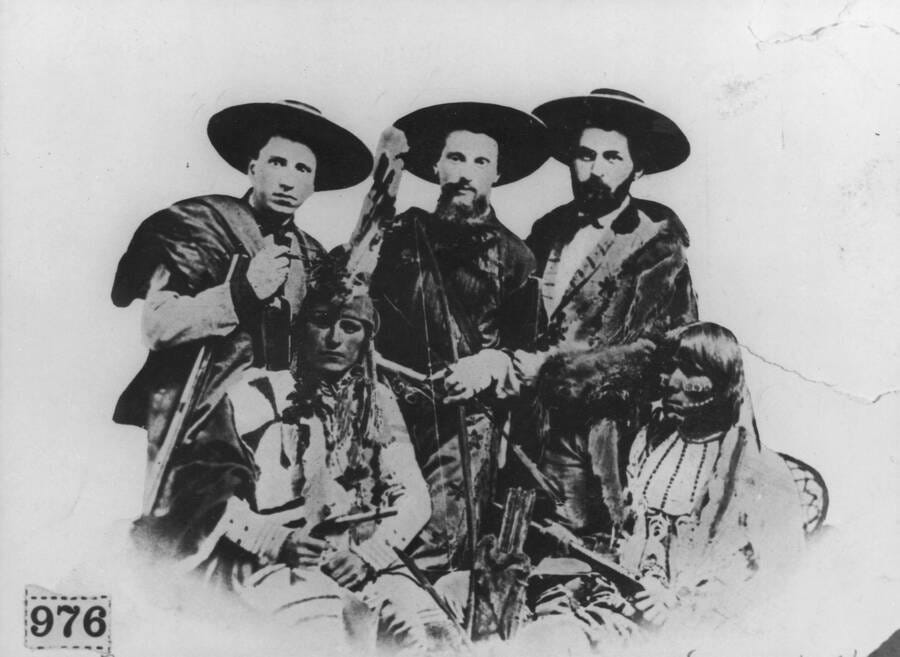
David S. Koffman: The title The Jews’ Indian is a play on a Robert Berkhofer, Jr.’s book from 1978, The White Man’s Indian: Images of the American Indian from Columbus to the Present.
I read that book in grad school and I liked the way that it forced the reader to think about the subject and the object. This was a book that was not about Native Americans. It was looking at white people’s representations of Native Americans.
I took this on as a similar project, but thought it important to disaggregate the category of “white man” and look specifically at Jews, with the hopes that other people might also look at sub-aggregates of colonists. Because people, for the most part, have seldom taken on colonial-settler identities. They think of themselves as Portuguese immigrants, or as Catholics, or as Mormons, but not “settlers.”
My interest is in seeing colonial actors as people who had ordinary economic and political concerns, who are desperate in their own way. I think that this study forces us to reckon with some of the political and moral ambiguities of settler-indigenous relations. Jews in the 19th century, like many others who arrived in the frontier West seeking to eke out a living, were often fleeing hunger, political violence, and disenfranchisement. Though they arrived as more powerful than Native Americans, they were not official state actors—they were, in a certain sense, refugees. We tend to think of the agents of settler-colonialism as military or political elites who created the conditions for expansion. But many were just pawns in the larger process. Jewish-Indigenous encounters were complicated; it’s not really a matter of good guys and bad guys, even though there are beneficiaries and losers.

This content originally appeared on Dissident Voice and was authored by Paul Haeder.
This post was originally published on Radio Free.
This content originally appeared on The Real News Network and was authored by The Real News Network.
This post was originally published on Radio Free.
This content originally appeared on Democracy Now! and was authored by Democracy Now!.
This post was originally published on Radio Free.
This content originally appeared on The Real News Network and was authored by The Real News Network.
This post was originally published on Radio Free.
Comprehensive coverage of the day’s news with a focus on war and peace; social, environmental and economic justice.
The post The Pacifica Evening News, Weekdays – July 25, 2025 appeared first on KPFA.
This content originally appeared on KPFA – The Pacifica Evening News, Weekdays and was authored by KPFA.
This post was originally published on Radio Free.
This content originally appeared on The Intercept and was authored by The Intercept.
This post was originally published on Radio Free.
This content originally appeared on Democracy Now! and was authored by Democracy Now!.
This post was originally published on Radio Free.
This content originally appeared on The Grayzone and was authored by The Grayzone.
This post was originally published on Radio Free.
This content originally appeared on Democracy Now! and was authored by Democracy Now!.
This post was originally published on Radio Free.
This content originally appeared on The Real News Network and was authored by The Real News Network.
This post was originally published on Radio Free.
This content originally appeared on Democracy Now! and was authored by Democracy Now!.
This post was originally published on Radio Free.
Zoe Jonick didn’t think she was asking for much when she went before the Oakland City Council with what she considered a simple request: Urge the California state Senate to vote yes on a bill requiring the state to study the feasibility of ditching Pacific Gas & Electric and embracing public power.
It didn’t seem unreasonable, given that the nearby cities of San Francisco, Berkeley, and Richmond had done exactly that in recent months. What Jonick, an organizer with the climate organization 350 Bay Area, and others backing the move wanted the city to do was push state lawmakers to support SB 332. The legislation would explore alternatives to investor-owned utilities and introduce safety and equity measures to improve service. “We’re not being prescriptive and saying what exactly a not-for-profit system would look like,” she said.
Yet this proved to be too much for the City Council, even if dozens of residents spoke out against the utility — which employs more than 8,000 people in Oakland — during a tense council meeting last week. The legislation, which also would have urged regulators to link utility executive compensation to power reliability and grid safety, was pulled from the agenda by a procedural maneuver. “It seems like a number of the council members have not had an opportunity to meet with both sides,” said Kevin Jenkins, the council president.
It was the latest setback in a nationwide campaign to replace investor-owned utilities with publicly owned operations. Advocates argue such a move would lead to cheaper, more reliable power and greater say for residents in how electricity is generated. Despite some victories here and there — Winter Park, Florida, and Jefferson County, Washington, have flipped the switch, and some nonprofit utilities, like California’s Sacramento Municipal Utility District, are many decades old — they’re fighting an uphill battle. Voters in Maine rejected switching to public power in 2023, an effort to do so in San Diego stalled amid skepticism from city leaders, and the city council in Ann Arbor, Michigan voted down a feasibility study proposal five months ago.
Those hoping to see Oakland join the fight come from the climate and environmental justice world. People of color comprise about 70 percent of the population, and almost 14 percent of the city’s 438,000 people live at or below the federal poverty line, leaving them burdened by utility debt. Critics of the utility, known locally at PG&E, also say the for-profit model disincentivizes maintenance and upgrades. That lack of upkeep contributed to faulty equipment sparking at least 31 fires, which killed 113 people, between 2017 and 2022.
Oakland council member Carol Fife sponsored the measure in support of Senate Bill 332, the Investor-Owned Utilities Accountability Act. Beyond calling for a feasibility study, the legislation caps rate hikes, prevents disconnections for vulnerable customers, and mandates periodic equipment audits and replacement. California’s utility bills are the second-priciest in the nation, and Fife said people in her district have experienced six rate hikes and frequent cutoffs in the past year — even as PG&E’s CEO earned $17 million.
“When I’m hearing that one ZIP code in my district in West Oakland has double-digit shutoffs for energy costs, I get concerned,” Fife said. “There are several neighborhoods in Oakland where at least 10 percent of the population has had their power cut off and remains without access to power.”
Critics say public power doesn’t necessarily mean cleaner power: Nebraska, the only state served entirely by a public utility, gets most of its electricity from coal. They also argue that the process of transforming a large utility system into a nonprofit would be time-intensive and expensive, and that they could cost electrical workers their jobs. But those weren’t the primary concerns constituents brought to Fife in voicing their reservations: She said Oaklanders were afraid that PG&E grant funding to local nonprofits would be cut off.
The company, which provides power to about 16 million people throughout California, is Oakland’s second-largest employer, and it recently spent $900 million relocating to Oakland. The utility also is a big philanthropic player — it provided nearly 1,000 grants throughout the state totaling $36 million last year, and spent $3.5 million on Oakland nonprofits in particular. Fife said nonprofit leaders she’s known for “two, three decades” said they supported her resolution but feared losing funding over it. (None of them spoke at the July 15 council meeting.)
“The lobbyists for PG&E were telling people that I specifically was trying to push PG&E out of Oakland, that I would be responsible for a lack of charitable giving to nonprofits in my district and in the city,” she said.
A PG&E representative, in an emailed statement, said the company “did not, and would not, suggest that we would pull our charitable support.”
“We stand ready to continue to listen to the concerns of City Council members and citizens, and we look forward to continuing to work with city officials on tangible efforts to advance energy equity, climate resilience, and public safety.”
The company representative did not comment on SB 332, but the company made the its thoughts clear during a Senate hearing in May: “SB 332 proposes sweeping changes without fully accounting for existing regulatory safeguards or the operational complexities of transforming the state’s energy infrastructure,” a PG&E lobbyist told lawmakers.
PG&E’s response speaks to the vehemence with which investor-owned utilities fight to maintain their hold over energy. When advocates of public power in Maine managed to get a referendum on the ballot, the state’s two dominant utilities spent more than $40 million to oppose it, outspending its advocates 34 to 1 and handily defeating the measure.
Even if Oakland’s resolution is out of play for now, the city’s public-power advocates aren’t done. As SB 332 continues moving through the legislature, “We’re also building this movement from the ground up,” Jonick said. That might look like more community workshops, or more city council resolutions. Above all, it’ll look like neighbors talking to each other. “No matter what, we’re going to be pushing to build community understanding that another way is possible, and we can fight the utility monopolies’ hold on us.”
This story was originally published by Grist with the headline The national fight for public power comes to Oakland on Jul 24, 2025.
This content originally appeared on Grist and was authored by Sophie Hurwitz.
This post was originally published on Radio Free.
This content originally appeared on The Real News Network and was authored by The Real News Network.
This post was originally published on Radio Free.
This content originally appeared on ProPublica and was authored by ProPublica.
This post was originally published on Radio Free.
They want us to believe that silence is strength. That if we keep our heads down, the storm will pass. But we are the storm. And our storm doesn’t need fists. It needs strategy, courage, and the fire of militant nonviolence.
In the latest episode of Gaslit Nation, Jamila Raqib, the executive director of the Albert Einstein Institution, delivers a masterclass in radical defiance without a single weapon raised. Raqib doesn’t just talk resistance. She teaches the art of war, the nonviolent kind, built on discipline, planning, and unshakeable conviction.
She carries forward the torch of Gene Sharp, the quiet revolutionary whose writings, like From Dictatorship to Democracy, which the Gaslit Nation Book Club read in March, have armed movements from Serbia to Syria. His ideas are dangerous, not because they incite chaos, but because they illuminate how to take power back without bloodshed. And dictators fear that more than any rifle.
This is militant nonviolence. It’s strategic. It’s disruptive. And when practiced with precision, it brings regimes to their knees.
Blueprint for the Battle AheadRaqib outlines a crucial truth: power is not monolithic. It comes from the obedience of people, workers, civil servants, police, students. Withdraw that obedience, and even the strongest tyrant collapses.
Take Serbia. Take Bangladesh. The world keeps giving us proof that nonviolent action isn’t weak; it’s lethal to authoritarianism when wielded with discipline. These movements succeeded not because they were polite, but because they were strategic. Organized. Defiant.
This is how repression backfires. Every crackdown becomes fuel. Every jail cell, every bullet, every propaganda campaign becomes a rallying cry, if activists know how to use it.
Weapons of the Peaceful WarriorRaqib reminds us that art is a weapon. Culture is armor. Community is infrastructure. And technology is a battlefield. Whether it empowers or undermines you depends on how well you understand it. Movements rise and fall on logistics, not just slogans.
Fear will always be there. That’s normal. But as Raqib insists, fear doesn’t mean stop. It means go smart. Fear is a compass, if it scares the regime, you’re probably doing something right.
Nonviolence is Not Passive. It’s Precision.This conversation isn’t about kumbaya. It’s about battle-readiness. It’s about studying the terrain of power, exploiting the cracks, and toppling giants with the slow, grinding force of disciplined resistance.
Nonviolence doesn’t mean surrender. It means refusing to give your enemy the war they want. It means winning on your terms. And in a time of rising fascism, digital surveillance, and global despair, we must turn to the tools that have worked, again and again.
So study Gene Sharp. Listen to Raqib. Organize like your life depends on it, because it does.
This is not the time for feel-good hashtags. This is the time for public education, mass mobilization, and strategic action. Nonviolent resistance is not soft. It’s the hardest fight there is.
But it’s the one that wins.
EVENTS AT GASLIT NATION:
NEW DATE! Thursday July 31 4pm ET – the Gaslit Nation Book Club discusses Antoine de Saint Exupéry’s The Little Prince written in the U.S. during America First.
Minnesota Signal group for Gaslit Nation listeners in the state to find each other, available on Patreon.
Vermont Signal group for Gaslit Nation listeners in the state to find each other, available on Patreon.
Arizona-based listeners launched a Signal group for others in the state to connect, available on Patreon.
Indiana-based listeners launched a Signal group for others in the state to join, available on Patreon.
Florida-based listeners are going strong meeting in person. Be sure to join their Signal group, available on Patreon.
Have you taken Gaslit Nation’s HyperNormalization Survey Yet?
Gaslit Nation Salons take place Mondays 4pm ET over Zoom and the first ~40 minutes are recorded and shared on Patreon.com/Gaslit for our community
Want to enjoy Gaslit Nation ad-free? Join our community of listeners for bonus shows, exclusive Q&A sessions, our group chat, invites to live events like our Monday political salons at 4pm ET over Zoom, and more! Sign up at Patreon.com/Gaslit!
This content originally appeared on Gaslit Nation and was authored by Andrea Chalupa.
This post was originally published on Radio Free.
This content originally appeared on Laura Flanders & Friends and was authored by Laura Flanders & Friends.
This post was originally published on Radio Free.
It was 4 a.m. on July 4 at Camp La Junta in Kerr County when Kolton Taylor woke up to the sound of screaming. The 12-year-old boy stepped out of bed and straight into knee-deep floodwaters from the nearby Guadalupe River. Before long, the water had already risen to his waist. In the darkness, he managed to feel for his tennis shoes floating nearby, put them on, and escape to the safety of the hillside. All 400 people at the all-boys camp survived, even as they watched one of their cabins float away in the rushing river. But 5 miles downriver at Camp Mystic, 28 campers and counselors were killed.
The flash flooding in Texas would have been catastrophic at any time of day, but it was especially dangerous because it happened at night. Research shows that more than half of deaths from floods happen after dark, and in the case of flash floods, one study put the number closer to three-quarters. Other hazards are more perilous in the dark, too: Tornadoes that strike between sunset and sunrise are twice as deadly, on average, as those during the day. No one can stop the sun from rising and setting, but experts say there are simple precautions that can save lives when extreme weather strikes at night. As climate change supercharges floods, hurricanes, and fires, it’s becoming even more important to account for the added risks of nocturnal disasters.
Stephen Strader, a hazards geographer at Villanova University, said that at night, it’s not enough to rely on a phone call from a family member or outdoor warning sirens (which Kerr County officials discussed installing, but never did). The safest bet is a NOAA radio, a device that broadcasts official warnings from the nearest National Weather Service office 24/7. One major advantage is that it doesn’t rely on cell service.
“That’s old school technology, but it’s the thing that will wake you up and get you up at 3 a.m.,” said Walker Ashley, an atmospheric scientist and disaster geographer at Northern Illinois University.
Even with warning, reacting in the middle of the night isn’t easy. When people are shaken awake, they’re often disoriented, requiring additional time to figure out what’s happening before they can jump into action. “Those precious minutes and seconds are critical a lot of times in these situations for getting to safety,” Strader said.
The darkness itself presents another issue. People tend to look outside for proof that weather warnings match up with their reality, but at night, they often can’t find the confirmation they’re looking for until it’s too late. Some drive their cars into floodwaters, unable to see how deep it is, and get swept away. It’s also harder to evacuate — and try to rescue people — when you can barely see anything. “I invite anybody to just go walk around the woods with a flashlight off, and you find out how difficult it can be,” Ashley said. “Imagine trying to navigate floodwaters or trying to find shelter while you’re in rushing water at night with no flashlight. It’s a nightmare.”
The logic applies to most hazards, but the night problem appears the worst with sudden-onset disasters like tornadoes and earthquakes — and the early-morning flash floods in Texas, where the Guadalupe rose 26 feet in 45 minutes. A warmer atmosphere can hold more moisture, meaning that storms can dump more water more suddenly than they used to.
“We have essentially, because of climate change, put the atmosphere on steroids,” Strader said. It’s on his to-do list to study whether other disasters, like hurricanes and wildfires, are deadlier at night.
When Hurricane Harvey pummeled Texas with rain for days in 2017, people described waking up to water creeping into their homes; the Texas National Guard navigated rescue boats through neighborhoods in the dark, searching for survivors. In recent years, hurricanes have rapidly intensified before making landfall, fueled by warmer ocean waters. That shrinks the window in which forecasters can warn people a strong storm is coming. To compound the problem, at the end of July, the Pentagon plans to stop sharing the government satellite microwave data that helps forecasters track hurricanes overnight, leaving the country vulnerable to what’s called a “sunrise surprise.”
In the past, nighttime conditions have proved useful for slowing wildfires: Temperatures are cooler and the air has more moisture, reducing the likelihood of fires spreading quickly. But climate change is lessening these beneficial effects. The overall intensity of nighttime fires rose 7 percent worldwide between 2003 and 2020, according to a study in the journal Nature. That means fires are increasingly spreading late at night and early in the morning. It was an ultra-dry January night when the Eaton Fire began tearing through Altadena in Los Angeles County. Some residents were woken up in the predawn hours to smoke already in their homes, strangers pounding on their windows, or sheriff’s deputies and rescue volunteers driving by with loudspeakers.
While daytime tornado deaths have declined over time, nighttime fatalities are on the rise, Strader and Ashley have found in their research. (It’s still unclear as to how climate change affects tornadoes.) They found that tornadoes that touch down at night are statistically more likely to hit someone, simply because there are more potential targets scattered across the landscape. During the day, people are often concentrated in cities and sturdy office buildings versus homes, which may be manufactured and not as structurally resilient to floods or high winds.
Night adds dimensions of danger to many types of disasters, but the darkness isn’t the only factor at play — and it doesn’t have to be as deadly, Ashley said, stressing the importance of getting a weather radio and making a plan in case the worst happens. “Have multiple ways to get information, and your odds of survival are extremely high, even in the most horrific tornado situation.”
This story was originally published by Grist with the headline The surprising reasons floods and other disasters are more deadly at night on Jul 21, 2025.
This content originally appeared on Grist and was authored by Kate Yoder.
This post was originally published on Radio Free.
AI is “not my thing,” President Donald Trump admitted during a speech in Pittsburgh on Tuesday. However, the president said during his remarks at the Energy and Innovation Summit, his advisers had told him just how important energy was to the future of AI.
“You need double the electric of what we have right now, and maybe even more than that,” Trump said, recalling a conversation with “David”—most likely White House AI czar David Sacks, a panelist at the summit. “I said, what, are you kidding? That’s double the electric that we have. Take everything we have and double it.”
At the high-profile summit on Tuesday—where, in addition to Sacks, panelists and attendees included Anthropic CEO Dario Amodei, Google president and chief investment officer Ruth Porat, and ExxonMobil CEO Darren Woods—companies announced $92 billion in investments across various energy and AI-related ventures. These are just the latest in recent breakneck rollouts in investment around AI and energy infrastructure. A day before the Pittsburgh meeting, Mark Zuckerberg shared on Threads that Meta would be building “titan clusters” of data centers to supercharge its AI efforts. The one closest to coming online, dubbed Prometheus, is located in Ohio and will be powered by onsite gas generation, SemiAnalysis reported last week.
For an administration committed to advancing the future of fossil fuels, the location of the event was significant. Pennsylvania sits on the Marcellus and Utica shale formations, which supercharged Pennsylvania’s fracking boom in the late 2000s and early 2010s. The state is still the country’s second-most prolific natural gas producer. Pennsylvania-based natural gas had a big role at the summit: The CEO of Pittsburgh-based natural gas company EQT, Toby Rice—who dubs himself the “people’s champion of natural gas”—moderated one of the panels and sat onstage with the president during his speech.
All this new demand from AI is welcome news for the natural gas industry in the US, the world’s top producer and exporter of liquefied natural gas. Global gas markets have been facing a mounting supply glut for years. Following a warm winter last year, Morgan Stanley predicted gas supply could reach “multi-decade highs” over the next few years. A jolt of new demand—like the demand represented by massive data centers—could revitalize the industry and help drive prices back up.
Natural gas from Pennsylvania and the Appalachian region, in particular, has faced market challenges both from ultra-cheap natural gas from the Permian Basin in Texas and New Mexico as well as a lack of infrastructure to carry supply out of the region. These economic headwinds are “why the industry is doing their best to sort of create this drumbeat or this narrative around the need for AI data centers,” says Clark Williams-Derry, an energy finance analyst at the Institute for Energy Economics and Financial Analysis. It appears to be working. Pipeline companies are already pitching new projects to truck gas from the northeast—responding, they say, to data center demand.
The industry is finding a willing partner in the Trump administration. Since taking office, Trump has used AI as a lever to open up opportunities for fossil fuels, including a well-publicized effort to resuscitate coal in the name of more computing power. The summit, which was organized by Republican senator (and former hedge fund CEO) Dave McCormick, clearly reflected the administration’s priorities in this regard: No representatives from any wind or solar companies were present on any of the public panels.
Tech companies, which have expressed an interest in using any and all cheap power available for AI and have quietly pushed back against some of the administration’s anti-renewables positions, aren’t necessarily on the same page as the Trump administration. Among the announcements made at the summit was a $3 billion investment in hydropower from Google.
This demand isn’t necessarily driven by a big concern for the climate—many tech giants have walked back their climate commitments in recent years as their focus on AI has sharpened—but rather pure economics. Financial analyst Lazard said last month that installing utility-scale solar panels and batteries is still cheaper than building out natural gas plants, even without tax incentives. Gas infrastructure is also facing a global shortage that makes the timescales for setting up power generation vastly different.
“The waiting list for a new turbine is five years,” Williams-Derry says. “If you want a new solar plant, you call China, you say, ‘I want more solar.’”
Given the ideological split at the summit, things occasionally got a little awkward. On one panel, Secretary of Energy Chris Wright, who headed up a fracking company before coming to the federal government, talked at length about how the Obama and Biden administrations were on an “energy crazy train,” scoffing at those administrations’ support for wind and solar. Speaking directly after Wright, BlackRock CEO Larry Fink admitted that solar would likely support dispatchable gas in powering AI. Incredibly, fellow panel member Woods, the ExxonMobil CEO, later paid some of the only lip service to the idea of drawing down emissions heard during the entire event. (Woods was touting the oil giant’s carbon capture and storage business.)
Still, the hype train, for the most part, moved smoothly, with everyone agreeing on one thing: We’re going to need a lot of power, and soon. Blackstone CEO Jonathan Gray said that AI could help drive “40 or 50 percent more power usage over the next decade,” while Porat, of Google, mentioned some economists’ projections that AI could add $4 trillion to the US economy by 2030.
It’s easy to find any variety of headlines or reports—often based on projections produced by private companies—projecting massive growth numbers for AI. “I view all of these projections with great skepticism,” says Jonathan Koomey, a computing researcher and consultant who has contributed to research around AI and power. “I don’t think anyone has any idea, even a few years hence, how much electricity data centers are gonna use.”
In February, Koomey coauthored a report for the Bipartisan Policy Center cautioning that improvements in AI efficiency and other developments in the technology make data center power load hard to predict. But there’s “a bunch of self-interested actors,” Koomey says, involved in the hype cycle around AI and power, including energy executives, utilities, consultants and AI companies.
Koomey remembers the last time there was a hype bubble around electricity, fossil fuels, and technology. In the late 1990s, a variety of sources, including investment banks, trade publications, and experts testifying in front of Congress began to spread hype around the growth of the internet, claiming that the internet could soon consume as much as half of US electricity. More coal-fired power, many of these sources argued, would be needed to support this massive expansion. (“Dig More Coal—The PCs Are Coming” was the headline of a 1999 Forbes article that Koomey cites as being particularly influential to shaping the hype.) The prediction never came to pass, as efficiency gains in tech helped drive down the internet’s energy needs; the initial projections were also based, Koomey says, on a variety of faulty calculations.
Koomey says that he sees parallels between the late 1990s and the current craze around AI and energy. “People just need to understand the history and not fall for these self-interested narratives,” he says. There’s some signs that the AI-energy bubble may not be inflating as much as Big Tech thinks: in March, Microsoft quietly backed out of 2GW of data center leases, citing a decision to not support some training workloads from OpenAI.
“It can both be true that there’s growth in electricity use and there’s a whole bunch of people hyping it way beyond what it’s likely to happen,” Koomey says.
This story was originally published by Grist with the headline Trump and the energy industry are eager to power AI with fossil fuels on Jul 20, 2025.
This content originally appeared on Grist and was authored by Molly Taft, WIRED.
This post was originally published on Radio Free.
This content originally appeared on The Grayzone and was authored by The Grayzone.
This post was originally published on Radio Free.
This content originally appeared on The Real News Network and was authored by The Real News Network.
This post was originally published on Radio Free.
This content originally appeared on VICE News and was authored by VICE News.
This post was originally published on Radio Free.
This content originally appeared on Democracy Now! and was authored by Democracy Now!.
This post was originally published on Radio Free.
This content originally appeared on The Intercept and was authored by The Intercept.
This post was originally published on Radio Free.
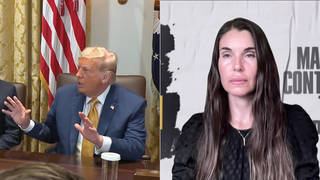
We speak to a survivor of sexual abuse perpetrated by Jeffrey Epstein and enabled by his partner Ghislaine Maxwell. Teresa Helm was sexually assaulted by Epstein at what she was told was a job interview in the early 2000s. She now works as the survivor services coordinator for the National Center on Sexual Exploitation and joins many voices calling for the release of federal documents pertaining to Epstein’s criminal case, though Helm emphasizes that the goal of their release must be to promote accountability and justice for victims, not as a form of political score-settling. “I really urge everyone to focus their commitment, their intention, all this time, effort and energy onto … these survivors and their healing,” says Helm. “We’re talking about people’s lives, and it should not be weaponized either way, in any administration.”
This content originally appeared on Democracy Now! and was authored by Democracy Now!.
This post was originally published on Radio Free.
In March 2024, a jury ordered the environmental giant Greenpeace to pay $666 million to the companies behind the Dakota Access pipeline.
The companies argued that Greenpeace was responsible for protests near the Standing Rock Sioux Reservation nearly a decade ago that drew thousands.
But Indigenous leaders, water protectors, activists, and court records agree: Greenpeace played a bit part in the Standing Rock movement, at best.
“They’re trying to point the finger at Greenpeace,” said Honorata Defender, a Standing Rock Sioux tribal member who helped start the movement.
“Because God forbid some Indians think for themselves and make a decision to stand up for themselves and their water and their land.”
 Robyn Beck / AFP via Getty Images
Robyn Beck / AFP via Getty Images
They called themselves “water protectors” and began protesting on the side of a highway near where construction was approaching the river. Most were Oceti Sakowin — Lakota, Dakota, and Nakota peoples. It was the early days of the #NoDAPL movement, in August 2016, and the U.S. Army Corps of Engineers had just granted a key permit for the Dakota Access pipeline to go under the Missouri River.
The company behind the pipeline, Energy Transfer, had originally considered building it upstream of the twin cities of Bismarck and Mandan in North Dakota, which are mostly populated by white people. But the Army Corps of Engineers rejected that route, in part because it had the potential to harm the cities’ drinking water supply. Instead, the pipeline was rerouted to cross the river just north of the Standing Rock reservation’s own drinking water intake.
To Dave Archambault, then-chairman of the Standing Rock Sioux Tribe, this was a case of environmental racism. He and other tribal leaders were worried, too, that culturally important sites located along the pipeline route could be destroyed.
It was also a matter of sovereignty. Two days after the Army Corps issued that key permit to Energy Transfer for the new route, the tribe sued. They argued that the Army Corps should not allow construction to continue without a deeper review of the route and substantial consultation — a cornerstone of federal Indian law that recognizes the nation-to-nation relationship between tribal governments and the United States.
When small protests began, the corps had still not issued an easement, a legal right that would allow Energy Transfer to build under the river on land that belonged to the U.S. government. However, there was nothing stopping Energy Transfer from building on private land. That’s when the trouble started.
Chairman Archambault was one of more than a dozen people arrested that August for attempting to block Dakota Access pipeline construction, but there was little attention paid by journalists. Online, however, in Indigenous digital spaces, protests were becoming very visible, very quickly. Facebook Live had launched that spring, and water protectors were broadcasting their actions on social media in real time for the world to see and attracting Indigenous peoples from around the country to stand with Standing Rock.

As more and more water protectors made their way to North Dakota, Achambault realized he would need help. He put out a public call to action, asking people to stand with Standing Rock. He also called Nick Tilsen, an Oglala Lakota organizer who had helped found a collective called the Indigenous Peoples Power Project, or IP3, which offered nonviolent, direct-action trainings to Indigenous peoples working to protect their communities, including from unwanted industrial development.
“The training that we’re talking about is not some crazy training,” said Tilsen, who saw the protests as an extension of the Civil Rights Movement of the 1950s and ‘60s. “Some people think that Martin Luther King and Rosa Parks just one day sat on a bus and launched a movement. But the reality is, they went through training. And that training helped them be disciplined and helped them be effective and helped them change the course of history.”
With protests underway, Tilsen worked with the Standing Rock Sioux Tribe to develop a set of principles for nonviolent direct action — protest actions and acts of civil disobedience meant to disrupt activities. At times, nonviolent direct action involves trespassing or disregarding police orders. The principles were hand-painted on a sign that hung prominently in the growing camp. Among them: “We are nonviolent,” and “Property damage does not get us closer to our goals.”
Tilsen was close with a Greenpeace employee named Cy Wagoner who is Diné and also a member of IP3, and Tilsen said he invited Wagoner to bring Greenpeace to Standing Rock. “We asked them to help train people,” Tilsen recalled. Around the same time, Tom Goldtooth, who is Diné and Dakota, was also urging Greenpeace to come. The executive director of the nonprofit Indigenous Environmental Network, Goldtooth was watching as tensions between police, private security, and water protectors intensified throughout the month. “I’m afraid of escalation,” recalled Goldtooth. “They’re waiting for someone, you know, to wink.”
Like Tilsen, Goldtooth hoped that Greenpeace would reinforce trainings already in progress, and send support for water protectors, such as a solar trailer that could power laptops and cell phones so that broadcasts could continue across social media.
Wagoner put together a proposal and a budget request for Greenpeace, which was approved: About $15,000 would pay for five people from IP3 to go to Standing Rock for two to three weeks. Greenpeace agreed to pay the cohort $125 a day, plus expenses, to conduct trainings, while Wagoner went on his usual Greenpeace salary. They began arriving around the beginning of September.
Meanwhile, the week before Labor Day, Tim Mentz — Standing Rock’s former tribal historic preservation officer and one of the people responsible for reviewing federal projects that may impact historic areas, burial sites, and religious places — began a survey of an area Energy Transfer planned to bulldoze. He was looking to see if there were culturally important sites along the pipeline path.

Mentz is a highly respected elder, and the first tribal historic preservation officer in the U.S. thanks to his tireless work to amend the National Historic Preservation Act that created the role — one that is now used by over 200 Indigenous nations.
As part of Standing Rock’s lawsuit against the Army Corps filed in July, Mentz had already submitted a statement to the court saying that “destruction of these sites will eventually destroy generations of family connections to these areas of spiritual power.” He added that protecting those sites wasn’t just about the past: It was about the future of the Oceti Sakowin.
“Steps taken to preserve sites like this are important to the survival and recovery of our spiritual traditions,” he wrote. “These sites still retain the ability to mend our people.”
On a hot, bright day, with permission from the landowner, Mentz and his team drove onto the privately-owned buffalo ranch that included access to the area where Energy Transfer wanted to drill under the river, and Mentz got to work. Over the course of a few days, they documented 27 burial sites and 82 stone features — arranged in circles and other patterns for ceremonial purposes — all along a 2-mile corridor that Energy Transfer planned to dig up.
On the Friday before Labor Day, he wrote up what he found, including a cluster of stones shaped like the Big Dipper, with a grave site attached to the cup, indicating an important leader. “This is one of the most significant archaeological finds in North Dakota in many years,” he wrote. The tribe’s attorney, who worked for a nonprofit public interest law organization called Earthjustice, filed the coordinates Mentz identified with a North Dakota Court.
The next morning, the Saturday before Labor Day, bulldozers were spotted at the sites Mentz had identified and that the tribe had filed in court. Water protectors rushed to stop them but private security guards stood waiting, and their dogs lunged at the pipeline opponents.
Despite their attempts, Energy Transfer graded the 2-mile corridor Mentz surveyed, digging a foot deep into the earth. “A significant portion of the site we’d surveyed had been cleared,” Mentz wrote in another declaration to court. “I do not believe that the timing of this construction was an accident or coincidence.”
A judge ruled soon after that he didn’t have the power to stop the company from continuing to build on private land.
However, the images of security dogs attacking pipeline opponents transformed the movement. Recorded by nonprofit news organization Democracy Now!, the dog attacks were broadcast around the world and quickly went viral. People poured in, mushrooming new resistance camps across the prairie and filling them with Indigenous peoples, longtime environmental organizers, and everyday activists moved by the social feeds coming out of Standing Rock. Church members, community groups, and individuals donated money and supplies to keep the camps afloat. A school opened for families with children and kitchens opened to feed the growing number of water protectors.
Nonprofits began to join the fight too, including Tom Goldtooth’s Indigenous Environmental Network, 350.org, Bold Alliance, and Greenpeace.

The story of Standing Rock is relatively well-known from here: The governor of North Dakota called in the National Guard, which joined law enforcement officers from around the U.S. and private security contractors hired by the pipeline company in an effort to disperse protests. For more than six months, water protectors faced off against military-grade armored vehicles, surveillance drones, at least one sniper, police with semi-automatic rifles, a surface-to-air missile launcher, tear gas, rubber bullets, flash-bang grenades, and water cannons deployed in sub-freezing weather.
While a vast majority of water protectors, including Greenpeace employees, abided by the nonviolent, direct-action principles IP3 and the Standing Rock Sioux Tribe posted in camp, not all agreed. Some pipeline opponents set fire to bulldozers and vandalized construction equipment. Some fought back against police, throwing rocks, logs, water bottles, and even Molotov cocktails.
In February 2017, soon after Donald Trump’s first presidential inauguration, the Army Corps gave the green light for Energy Transfer to begin drilling under the river. By late February, security forces moved in and removed water protectors camped near Standing Rock. Energy Transfer bored a hole underneath the Missouri River for the pipeline to be pushed through, effectively ending the fight.
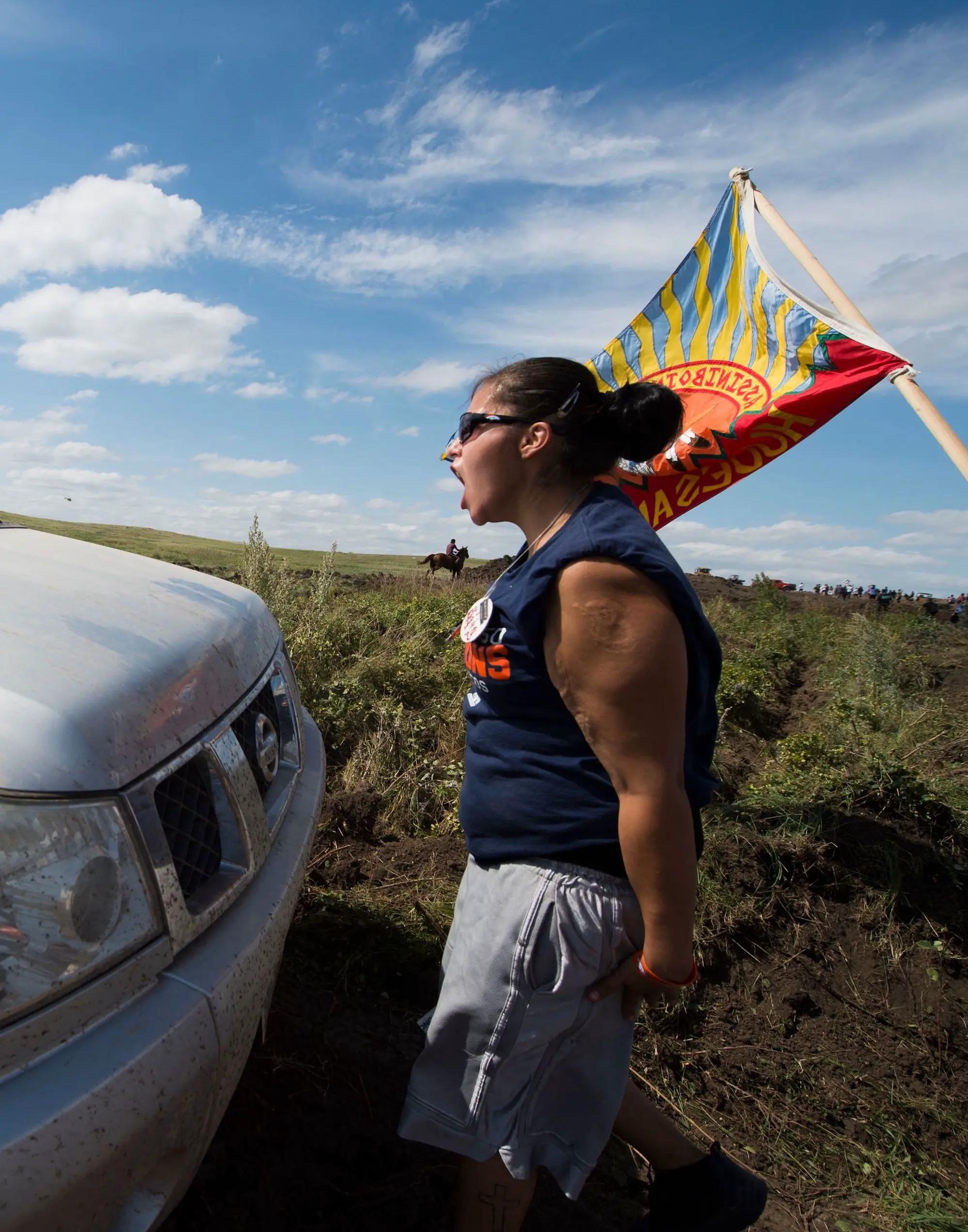 Robyn Beck / AFP via Getty Images
Robyn Beck / AFP via Getty Images
In February 2017, as security forces prepared to evict water protectors from their camps, TigerSwan — a private security firm contracted by Energy Transfer — began emailing with the law firm Gibson, Dunn, & Crutcher.
The firm had been representing Energy Transfer as it attempted to convince a federal court to dismiss the Standing Rock Sioux Tribe’s claims against the Army Corps. Gibson, Dunn, & Crutcher would eventually declare victory against Greenpeace in the $666 million lawsuit.
TigerSwan had spent months spying on water protectors by monitoring social media feeds, listening in on radio communications, flying drones, and monitoring camps by helicopter. It sent infiltrators — people pretending to be water protectors — into the anti-pipeline camps to gather information. Founded in 2008 by a former commander of an elite special operations unit known as Delta Force, TigerSwan’s security contractors had cut their teeth during the wars in Afghanistan and Iraq. At Standing Rock, it brought those “war-on-terror” tactics home.
Files obtained through a public records request reveal that TigerSwan was not only providing the intelligence it collected to law enforcement, but it was also preparing to provide some of the information it gathered on water protectors to the law firm Gibson Dunn, including a set of spreadsheets listing crowdfunding pages, how much each had raised, and who was involved, as well as spreadsheets matching protest actions with individual water protectors, labeled “named conspirators.” The company asked one of its infiltrators to identify what groups pipeline opponents belonged to. And it asked another contractor to send over the makes and models of vehicles that showed up at certain protests.

That record request also revealed a purpose of the communications between TigerSwan and Gibson Dunn: a RICO lawsuit. Gibson Dunn was considering using the Racketeer Influenced and Corrupt Organizations Act, or RICO — a law originally developed to go after the mafia — to target anti-pipeline activists and organizers, and had turned to Energy Transfer’s mercenary private security firm, TigerSwan, to help. TigerSwan did not respond to a request for comment.
Months later, in August of 2017, Deepa Padmanabha, the senior legal advisor for Greenpeace in the U.S., learned that Energy Transfer was suing the environmental organization in federal court, alleging violations of the RICO Act. “This one came as a very big surprise just because the Greenpeace entities had such little involvement with anything associated with Standing Rock,” she said.
Padmanabha called it a SLAPP suit — a Strategic Lawsuit Against Public Participation — which is designed not necessarily to win, but to drain opponents of resources and discourage them from speaking out. SLAPP suits are meant to set an example, and when successful they can be extremely effective.
Gibson Dunn is known to excel at aggressive lawsuits. The firm also has a history of helping big corporations avoid accountability for harming the environment or undermining Indigenous peoples’ rights — including arguing to gut the Indian Child Welfare Act in 2023.
In 2007, banana workers in Nicaragua won a multimillion-dollar lawsuit in the U.S. against the Dole fruit company for poisoning them with a pesticide called DCBP. To combat the win, Dole hired Gibson Dunn. They alleged a vast conspiracy in which the banana workers’ attorney had recruited fake banana workers to go after the fruit company. There were multiple holes in the story that later came to light, but to the American judge who presided over the conspiracy case, it didn’t matter: The money awarded to the workers was taken back.
Dole’s general counsel at the time gave the strategy a name: the “kill step.”
The kill step worked by not only targeting the plaintiffs, but also going after their lawyers, supporters, and media. It destroyed the story being told and replaced it with a new one. Perhaps the most well-known application of the kill step by the law firm was for Chevron. In Ecuador, the homelands of several tribes, including the Cofan, Secoya, and Kichwa, had been contaminated by abandoned pits of oil waste, and in 2011, they won an $18-billion lawsuit, holding the oil giant Chevron accountable. The settlement was reduced by the Ecuadorean Supreme Court to $9.5 billion in 2013. Chevron, in turn, filed a RICO complaint in the U.S. against the lawyers who argued the case, including attorney Steven Donziger, claiming that they had contaminated witnesses, behaved unethically, and maybe even bribed a judge.
There were a number of issues with Chevron’s case, but the company won. Over the next few years, Chevron and Gibson Dunn kept going after Donziger. He ended up on house arrest for two years and in jail for 45 days for a contempt of court charge. Meanwhile, the oil is still contaminating water in the Ecuadorian Amazon — and, like the banana workers in Nicaragua, the Ecuadorians still haven’t been able to collect the settlement awarded to them.
When Padmanabha got word Greenpeace was being sued, she wasn’t just confused as to why the organization was being sued, she was also confused by the timing. Oil was already flowing through the Dakota Access pipeline — the company had gotten what it wanted. But there was a clue: “We were already dealing with another massive SLAPP suit filed in federal court.”

In 2016, before Standing Rock, a law firm called Kasowitz Benson Torres had filed a RICO suit against Greenpeace on behalf of a timber company called Resolute Forest Products. The lawsuit claimed that Greenpeace Canada’s anti-logging campaign, which targeted Resolute, amounted to racketeering, defamation, and tortious interference. In 2017, the Kasowitz law firm filed a second lawsuit against Greenpeace, this time on behalf of Energy Transfer.
“The complaints looked very similar,” said Padmanabha. “It was the same allegations of a RICO conspiracy, and it was the same attempt to scare us into silence and bankrupt us.”
Ultimately, the RICO suit didn’t live long. A federal judge dismissed it in the winter of 2019, writing: “This is far short of what is needed to establish a RICO enterprise.” But Energy Transfer quickly filed a new version of the lawsuit in North Dakota state court, using local conspiracy law to tie the claims together.
Gibson, Dunn, & Crutcher would eventually take over the case. In a statement, a spokesperson for Kasowitz, Shannon O’Reilly, wrote: “The firm spearheaded Energy Transfer’s suits against those who wrongfully targeted these projects, and we are gratified that Energy Transfer ultimately achieved such a successful result.”
In the North Dakota iteration, the lawsuit’s primary targets were Greenpeace, two individual pipeline opponents named Cody Hall and Krystal Two Bulls, and a group called the Red Warrior Society. All were accused of conspiring together to propel the anti-pipeline movement. The company also alleged that the conspiracy was spread throughout Greenpeace-affiliated organizations, including Greenpeace Inc., which carries out U.S. based campaigns; Greenpeace Fund, also based in the U.S., which raises money for certain Greenpeace efforts; and Amsterdam-based Greenpeace International, which licenses out the Greenpeace name to independently operated nonprofits around the world and coordinates some of their activities.
The lawsuit included three buckets of claims. There were on-the-ground, protest-related damages for things like trespassing and destruction of construction equipment. There were defamation claims, alleging that Greenpeace and the other defendants lied by accusing Energy Transfer of deliberately desecrating sacred sites and putting the pipeline on tribal lands, and accusing police and private security of being violent toward nonviolent water protectors. And finally, Energy Transfer alleged tortious interference — essentially, that those defamatory statements damaged the company’s relationship with banks.
Those accused weren’t the only ones impacted by the lawsuit. Subpoenas went out demanding people and organizations hand over documents or testify in front of lawyers. Energy Transfer subpoenaed Water Protectors Legal Collective, a group that provided legal support to pipeline opponents, and Unicorn Riot, a media collective that broadcast hours of footage of police violence. It also subpoenaed Standing Rock’s former tribal historic preservation officer Tim Mentz. Across the water protector community, fear began to spread that anyone and everyone could be dragged into the lawsuit.
However, two people at the heart of the case — Greenpeace’s alleged co-conspirators Cody Hall and Krystal Two Bulls — never received official notification of the lawsuit. Months went by, then years. In legal filings, Energy Transfer said they’d attempted to serve Hall at a home in South Dakota where his parents lived briefly a decade before, but the knock Hall expected at his door didn’t come. At one point, Hall got so stressed about it he called Energy Transfer. “I said, ‘You guys say you can’t serve me. I’m sitting here at home. Serve my ass. So what the hell is this bullshit?’” A receptionist took his number but he never heard back.
 Helen H. Richardson / The Denver Post via Getty Images
Helen H. Richardson / The Denver Post via Getty Images
Greenpeace was founded just as the contemporary environmental movement was taking off in the 1970s. What set the organization apart from others at the time was dramatic protest actions at sea: Greenpeace activists zoomed little boats in between whaling ships and harpoons, risking their lives to save whales. From the very beginning, Greenpeace was ardently opposed to any kind of violence. Still, governments and companies began to label its activities as ecoterrorism.
“I don’t think there’s any credible examples of anything remotely like something you could describe as ecoterrorism in Greenpeace’s history,” said Frank Zelko, a historian at the University of Hawai‘i who wrote a book on the organization called Make It a Green Peace!. “Unless you reframe ecoterrorism as a bunch of people just blocking bulldozers or hanging a banner between a couple of chimneys.”
It’s important to note that Greenpeace’s efforts to save wildlife at times took aim at Indigenous peoples and practices. For example, an anti-seal-hunting campaign Greenpeace launched in the 1970s destroyed subsistence living for a number of Indigenous communities and a major income stream for many Indigenous nations. By the 1990s, activities like those began to get pushback.
“We challenged the white organizations back in the early 1990s with environmental racism,” said Tom Goldtooth of the Indigenous Environmental Network. “Greenpeace stepped up.”
In 2017, when the RICO lawsuit hit Greenpeace, Goldtooth was in touch with the organization again. “We said: ‘Hey man, this is mucked up. We’ll stand with you. You’re going to fight this.’” But by 2024, as the lawsuit looked like it would go to trial, it became less and less clear that Greenpeace actually would fight Energy Transfer.
Management for Greenpeace in the U.S. assessed that they had a 5 percent chance of winning. If this went to trial, they determined that Greenpeace as they knew it might cease to exist.
Then, around the winter of 2024, Gibson, Dunn, & Crutcher reached out to Greenpeace with a settlement proposal: Energy Transfer would drop the lawsuit if the organization put out a statement. Greenpeace would have to indicate that there was violence during the Standing Rock movement, that the pipeline did not pass through the Standing Rock Sioux’s land, and that the company did not deliberately destroy sacred sites. In other words, they’d have to refute the statements that Energy Transfer had claimed as defamation.
The statement Energy Transfer wanted Greenpeace to make “would have been a lie,” Goldtooth said.
Over the next few months, Greenpeace leadership deliberated over the settlement offer. A worst-case trial scenario could mean the loss of a 50-year legacy and could scuttle Greenpeace’s future impact. It could put up to 135 staff members out of work and risk dismantling the organization’s global network. It could cause reputational damage to the Standing Rock Sioux, allies, and other activists who would be forced to testify, and it could set a legal precedent for suing movement organizations out of existence. The best-case trial scenario: Greenpeace would lose, but would be able to say that it went down fighting. Some in the organization concluded that this trial scenario would be catastrophic.
A worst-case settlement, on the other hand, didn’t seem quite as bad to some. It could cause a public relations crisis, and Greenpeace might lose a few million dollars a year in funding. Some staff might resign, and Indigenous peoples and nations might stop working with the organization. The statements that Greenpeace would have to sign could also be used by Energy Transfer to go after the Standing Rock Sioux Tribe. But Greenpeace would live to fight another day.
Managing the worst-case scenario of a settlement became the option Ebony Twilley Martin, Greenpeace’s newly appointed executive director, and several senior managers supported.

However, the view was not shared by everyone, and the question of the settlement began to divide the organization.
Multiple people high up in the organization strongly opposed Energy Transfer’s settlement proposal. For example, Deepa Padmanabha resigned as deputy general counsel because she disagreed with senior management’s position on the settlement, according to sources close to Greenpeace. Staff members who got wind of the possibility of settlement organized a letter to the board, expressing their own concerns. Meanwhile, Twilley Martin met with the Standing Rock Sioux Tribe about the possibility of settling.
“It would’ve hurt us, no doubt,” current Standing Rock Chairwoman Janet Alkire said of the settlement. “ We’d have to fight against that too. Again, lies. It’s not true.” However, she said she viewed the decision as Greenpeace’s to make.
Tom Goldtooth also spoke with Twilley Martin on the phone multiple times. He said he knew she was under a lot of pressure, but he was clear in his conversations with her about what it would mean for Greenpeace to accept Energy Transfer’s terms. “This would end our relationship with you, with Greenpeace,” he said he told her. “It was that serious. This is a life and death issue to our Indigenous peoples. This is a life and death issue to life itself, to water, to the river.”
Goldtooth said that Twilley Martin was quiet. “I feel it hit her hard.”
Ultimately, it was up to Greenpeace’s board to decide. “It was clear for us that it was a hell no,” recalled Niria Alicia Garcia, a Greenpeace Inc. board member. To Garcia, the survival of Greenpeace was not the most important thing on the line, but she said it made sense to her that certain people did want to accept the settlement.
“When you’re an eight-figure, big legacy, big green, you are going to have to hire people who know how to keep a 501(c)(3) viable and afloat,” she said, referring to nonprofit organizations that are tax-exempt under Section 501(c)(3). “And at the same time, you’re going to need to hire people who are fully aligned and ready to embody the mission. That is the forever tension in nonprofits that exist to be in service to the movement.”
In the spring of 2024, the board voted to reject the settlement proposal. It came at a cost: Ebony Twilley Martin, the first Black woman to serve as Greenpeace’s executive director, hailed as a “historic first” in the environmental movement, left the organization. Padmanabha ultimately rejoined the U.S. organizations as senior legal adviser.
A spokesperson for Greenpeace in the U.S., Madison Carter, wrote in a statement: “Difficult conversations are a common byproduct of risk assessment exercises, and this case is no different.” She added: “SLAPP lawsuits like the one we are facing from Energy Transfer are intended to divide movements and drain resources, which is why it is paramount that we remain as prepared as possible for any and all outcomes.”
Twilley Martin declined to comment.
Garcia, the Greenpeace board member, said, “I’m proud that we stuck to our values and decided to stay true to the spirit and the mission and the purpose of why Greenpeace ever came to exist.” She added, “At the end of the day, nonprofits are discardable; they are revocable; they are replaceable — and the movement is not. Relationships are not.”
North Dakota’s Morton County District Court set a date for trial: February 24, 2025.
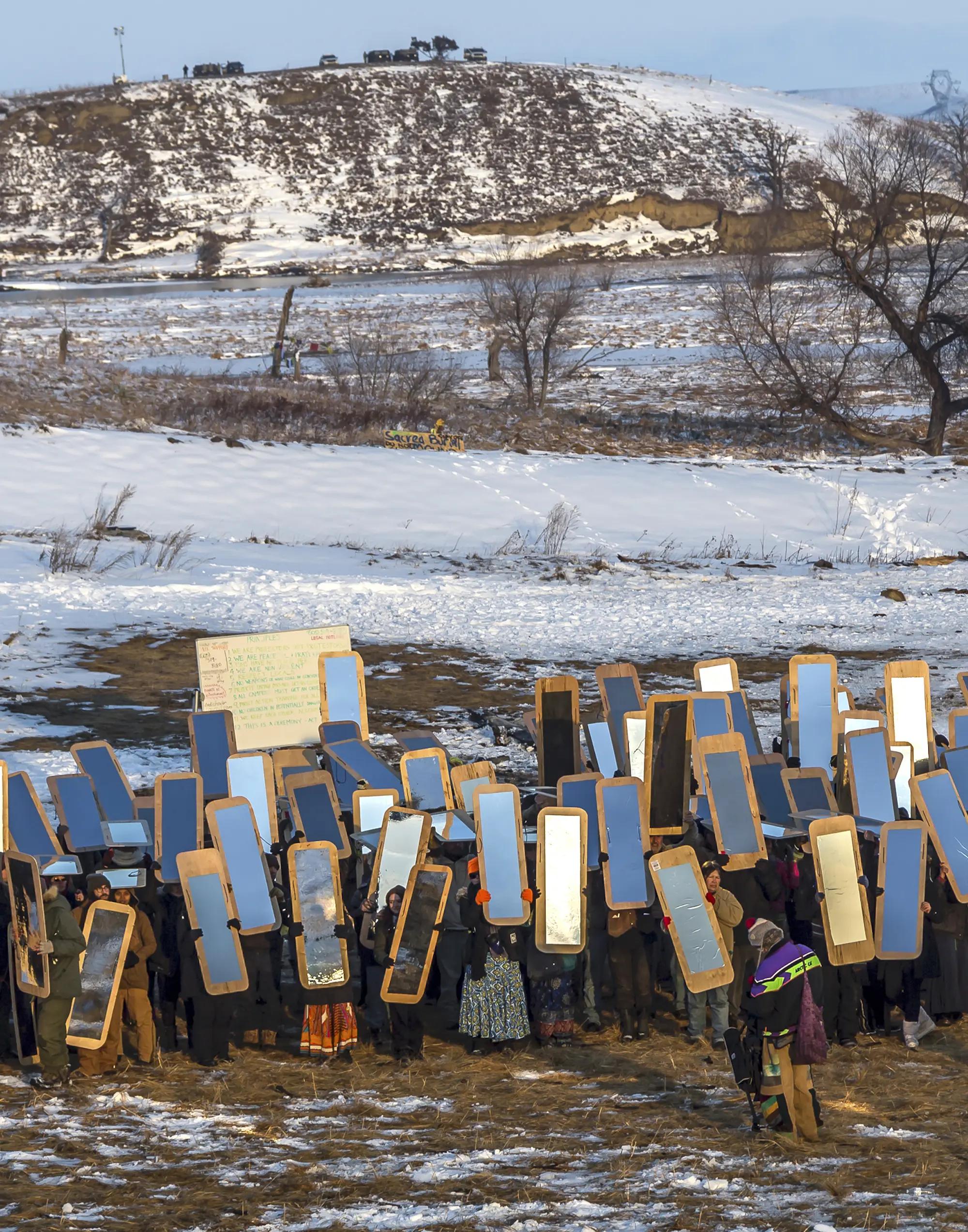 Michael Nigro / Pacific Press / LightRocket via Getty Images
Michael Nigro / Pacific Press / LightRocket via Getty Images
Jury selection began on a chilly morning last February. “I want to congratulate you on being chosen for jury duty,” said Judge James Gion to the pool of potential jurors. “It is one of the highest obligations and privileges of our democratic system.”
Gion, a judge of 10 years, presided over the Stark County District Court in rural western North Dakota, more than 90 miles away from Morton County, where the suit was filed. Every judge in the entire South Central Judicial District of North Dakota, in which Morton County sits, recused themselves from the case due to conflicts of interest.
Over the next two days, two sets of around 30 potential jurors, selected from the local populace, would answer questions from the lawyers. Each side of the lawsuit aimed to select jurors who would be most favorable to their case, and they sought to convince the judge to eliminate people too biased to be fair.
As lawyers questioned the jury pool, a pattern emerged: Multiple potential jurors said that hearing about the Standing Rock protests reminded them of what they called “the disruption in our community.” One woman put it plainly: “I think you’ll have a tough time finding people completely unbiased on that, because it affected everyone.”
Greenpeace’s lawyer, Everett Jack, asked the group: “How many of you feel the same way?”
All but a handful of people raised their hands.
About five months before jury selection began, an unusual newspaper, Central ND News, began showing up in people’s mailboxes. Sandwiched between articles criticizing then-presidential candidate Kamala Harris and analyzing the dangers of “illegal aliens” were recollections about the Standing Rock protests a decade before. Most were unpleasant.
One headline read, “Former Dakota Access pipeline protester: ‘We ended up creating a local ecological disaster.’”
Another said, “THIS MONTH IN HISTORY, OCTOBER 2016: Area schools locked down as authorities respond to pipeline protests.”
Central ND News is part of a company called Metric Media, which includes dozens of locally-oriented media sites that have been labeled as part of a “pay-for-play” network. For a price, that network has allowed corporate executives and political operatives to order up articles and have them distributed to specific audiences. These latest stories were apparently aimed at residents of Morton County, where the Standing Rock protests took place — and from which the jurors were selected. According to court filings, a murky trail of funds connects Energy Transfer’s board chair Kelcy Warren to the newspapers. Metric Media did not respond to a request for comment.
When Jack, Greenpeace’s lawyer, asked about the newspapers, a potential juror pulled out a copy he had brought with him. “I thought it was kinda weird that I got that,” he said. “It brought back memories. I agree with it that what happened down there wasn’t good.”

Greenpeace had already attempted to get the trial moved to another county, arguing that the Morton County jury pool would be too biased to decide the case fairly. In a survey the organization commissioned from the National Jury Project, a consultancy that does jury research, 97 percent of respondents gave answers indicating bias against Greenpeace, or, in a few cases, Energy Transfer.
Many of the potential jurors also had financial links to the fossil fuel industry. One of them, labeled juror 14 by the court for the sake of anonymity, said he didn’t think the case was right for him because he worked in the petroleum industry. He added that he would be uncomfortable ruling against his industry, and that he would be less likely to believe Greenpeace’s witnesses than Energy Transfer’s. Juror 14 also revealed that he had a family member in law enforcement who policed the protests. When Greenpeace’s lawyers asked for him to be removed from the pool, Energy Transfer’s lawyer, Trey Cox, pushed back.
“If the judge instructs you that the law requires you to only consider the evidence in this courtroom and to treat all the parties fairly, are you able to follow the judge’s instruction and be fair to all parties?”
“Yes, I believe I can be,” the man replied.
Juror 14 was allowed to stay.
After two days, the jurors were announced: a man who worked at a gasification company; another who oversaw two power facilities and told lawyers that “my job depends on fossil fuels” during the selection process; a woman whose family received royalties for oil on their land; and three women whose husbands had ties to the oil and gas industry. One woman’s husband also worked for a security company hired by Energy Transfer, as well as the contractor that drilled under the Missouri River, though she added that she didn’t think he worked at those places during pipeline construction.
In the end, seven of the 11 jurors and alternates revealed economic ties to the fossil fuel industry. Nobody on the jury identified themselves as Indigenous.
Opening arguments began the next day.
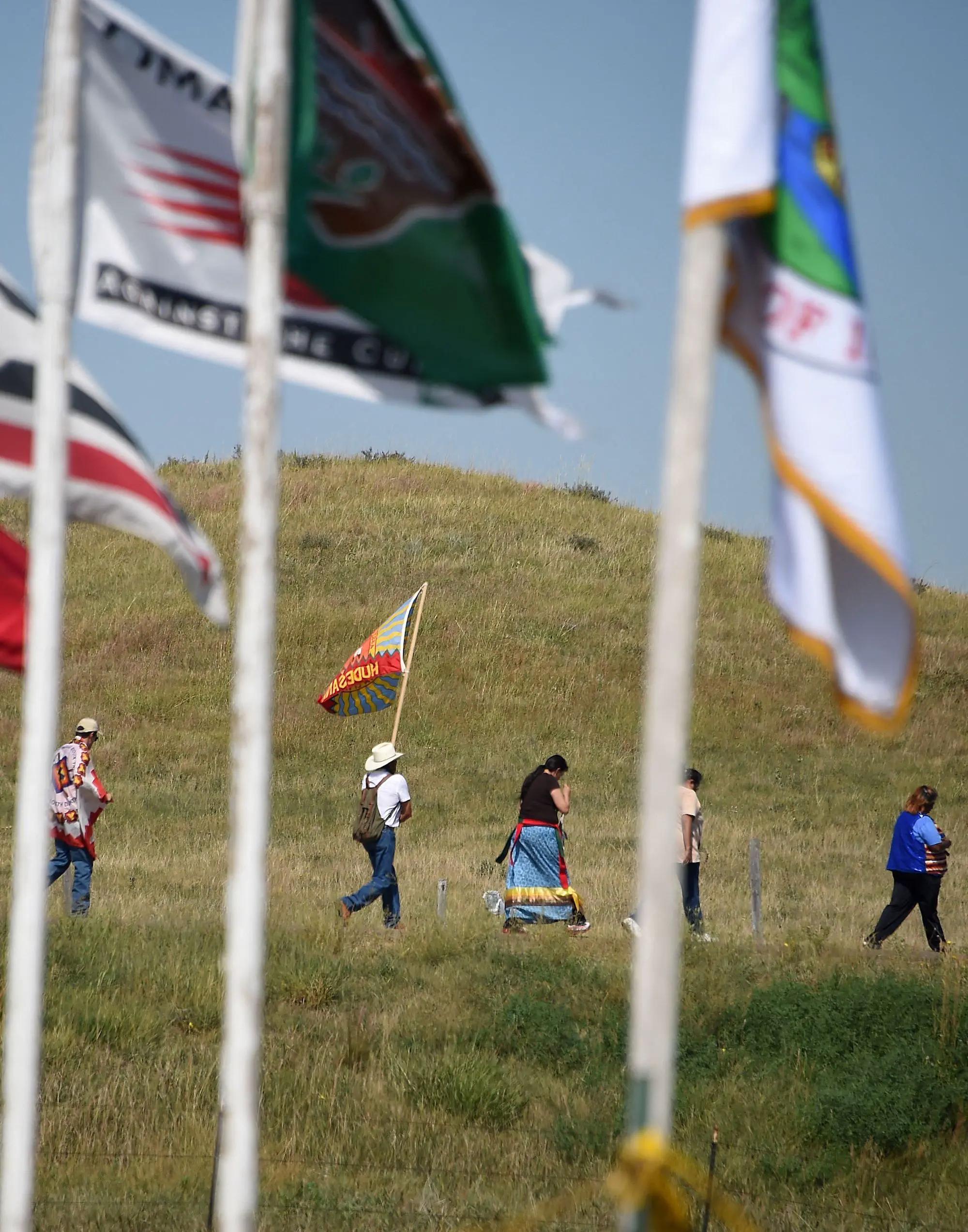 Robyn Beck / AFP via Getty Images
Robyn Beck / AFP via Getty Images
“Here they are,” explained the Gibson Dunn lawyer, Trey Cox, standing before a flat-screen television. “These are the Greenpeace six. Not a single one of them lives in this community. These people are professionals.”
On the screen flashed headshots of six people, all employees of Greenpeace Inc.
“They embed in a location, then they escalate,” he said. “They thought they could do it in secret — they thought that we wouldn’t be smart enough to figure out what they did.”
“Today starts the day of reckoning,” he concluded.
Energy Transfer’s first witness was a towering bald man with an American flag pin on the lapel of his suit. Mike Futch was the project manager for the North Dakota section of the Dakota Access pipeline. Cox asked him about violence perpetrated by private security — like the now-infamous dog attacks.
“The only violence was when protesters came onto private property and attacked us,” Futch said. “We were always in retreat.”
According to Futch, the property damage that occurred at construction sites was intentionally violent: Pipeline opponents cut hydraulic hoses, booby-trapped equipment, filled gas tanks with sand and gravel, spray-painted cabin windows, and busted equipment gauges.
His testimony was backed up over the next few days by five law enforcement officers who agreed that the protesters were the violent ones, not security. “Violent” incidents ranged from water protectors blocking a road during a Thanksgiving Day protest in the town of Mandan, to death threats received by the now-deputy chief of the Bismarck Police Department, whose family eventually left home for a few days at the suggestion of the FBI. Captain Brian Steele testified that he got hit in the back with a big rock. Steele’s assessment: “We were probably too nice.”
It was defamation, according to Cox, for Greenpeace to say that police and private security used violence against nonviolent protesters.

On day five, Energy Transfer started playing video depositions from Greenpeace employees. On screen, Davy Khoury, a Greenpeace warehouse worker, explained how he spent hours driving on country back roads following the proposed path of the pipeline. According to his deposition, he was scouting — collecting information about what was happening with construction and passing it back to Indigenous organizers in the camps.
Energy Transfer’s lawyers displayed one of Khoury’s emails, written to another Greenpeace employee in October 2016: “The company has a place where all their toys are stored near in the Bismarck area,” Khoury wrote. He suggested a protest strategy. “If the entrances were blocked, it would be very hard for them to get to the job sites.”
The other Greenpeace employee responded, “I just sent 30 straight boxes down,” referring to lockboxes — plumbing pipes that protesters use to lock themselves to each other.
Greenpeace lawyers later pointed out that the protest Khoury suggested likely never happened.
In total, six Greenpeace employees visited Standing Rock during the protests — the Greenpeace Six, according to Cox — sometimes staying for a few days, sometimes for a few weeks. They all worked for Greenpeace Inc., and not the other two Greenpeace-affiliated organizations named in the suit — in fact, no one from either of the other Greenpeace groups even visited Standing Rock at all.
During their time at Standing Rock, those six employees delivered supplies, built structures, and helped the Indigenous Peoples Power Project, or IP3, train people in nonviolent direct action. In his video testimony, Nick Tilsen estimated that IP3 trained somewhere between 5,000 and 10,000 people over the course of the Standing Rock protests. Lawyers also showed that Greenpeace employees did directly participate in some protest actions; however, Tilsen stated that no one from Greenpeace led those actions, while acknowledging that his friend from Greenpeace, Cy Wagoner, helped with some planning. Rather, it was people from the area who set the agenda.
Energy Transfer alleged that Greenpeace provided funding for Standing Rock to the tune of $55,000, and that the organization’s executive director at the time, Annie Leonard, helped direct a handful of foundations to donate an additional total of $90,000 to the movement.
The impact of that support, along with a defamatory information campaign, according to Gibson, Dunn, & Crutcher, was huge: Energy Transfer spent $7 million on PR firms to deal with the protests. An additional $8.5 million went toward buying the most controversial land: the ranch where Tim Mentz found the 27 burial sites and 82 stone features. The company paid contractors $14.5 million for changes to construction plans and lost another $96.4 million when Energy Transfer delayed the refinancing of loans associated with the pipeline. The pipeline was supposed to start pumping oil in January 2017 but couldn’t until June, costing the company another $80 million.
As the trial proceeded, none of the law enforcement witnesses or Energy Transfer personnel who had been on the ground seemed to know much about Greenpeace. According to public records and testimony in court, Greenpeace hardly ever appeared in the daily intelligence reports written by the private security firm TigerSwan. Of more than 1,700 pages of police operations briefings during Standing Rock, Energy Transfer’s lawyers pointed to only one that described a Greenpeace employee at a protest.
According to Sheriff Kyle Kirchmeier, up to 10,000 people were in the camps at the height of the protest. In his testimony, Kirchmeier said he believed they showed up to Standing Rock because the Standing Rock Sioux Tribe’s chairman, Dave Archambault, put out a public call and invited people to the prairie — that the real catalysts were the dog attacks, the explosion of social media coverage, and that people believed the pipeline was located on the tribe’s unceded territory.
“It’s part of the treaty,” Kirchmeier said.

The tribe’s treaty is a big reason why the pipeline’s operation was delayed from January 2017 to June. The Standing Rock Sioux Tribe’s lawsuit against the Army Corps of Engineers was filed well before the camps began to grow. Under pressure from Standing Rock and other Indigenous nations, the Army Corps denied the easement that December, ordering a deeper environmental review first. In other words, for most of the months in which people protested, August 2016 to February 2017, Energy Transfer did not have permission to drill. That permission didn’t come until after Donald Trump came into office, in February 2017.
Energy Transfer and its lawyers were intimately familiar with this timeline. By November 2016, Gibson Dunn was representing the company as it attempted to push the Army Corps for permissions. And by December, the law firm had helped Energy Transfer draft a memorandum urging President Trump’s transition team to advance an executive order for the Army Corps to grant the easement.
In the end, Energy Transfer’s lobbyist in D.C. even prepared a draft of the executive order, and soon after Trump was inaugurated, he signed and issued it, directing the Army Corps to deliver an easement.
“Y’all were able to start drilling under the lake within minutes of getting that easement, right?” a Greenpeace lawyer asked Energy Transfer’s board president Kelcy Warren during a video deposition.
“Shortly thereafter, yes sir,” said Warren with a laugh.
The Standing Rock Sioux Tribe does play a major role in the true story of Energy Transfer’s Dakota Access pipeline easement. In the months after the pipeline was installed under the river, the Standing Rock Sioux Tribe and other Indigenous nations continued pushing for a federal court to shut the pipeline down. In June 2017, a judge ruled that the Army Corps would have to redo parts of its environmental review. The legal back-and-forth dragged on for years.
Energy Transfer’s banks took note. In court, Energy Transfer alleged that Greenpeace’s divestment campaign, and its defamatory lies, forced the company to delay refinancing a loan, which cost them $96.4. However, meeting minutes from Energy Transfer’s board of directors, described in court, indicate that the company actually decided to hold off on refinancing due to banks’ concerns about the Standing Rock Sioux Tribe’s ongoing legal battle — not Greenpeace.
“This is all a bunch of bullshit,” said Doug Crow Ghost, the tribe’s head of water resources, of the Greenpeace lawsuit. Crow Ghost noted that the tribe took in $11.7 million in donations related to the pipeline protests. Greenpeace’s $55,000 and $90,000 in foundation funding was meager by comparison.
But no Standing Rock member testified in the Greenpeace trial. As a rule, the Standing Rock Sioux Tribe doesn’t go to state court: The state has no jurisdiction over the nation due to federal Indian law.
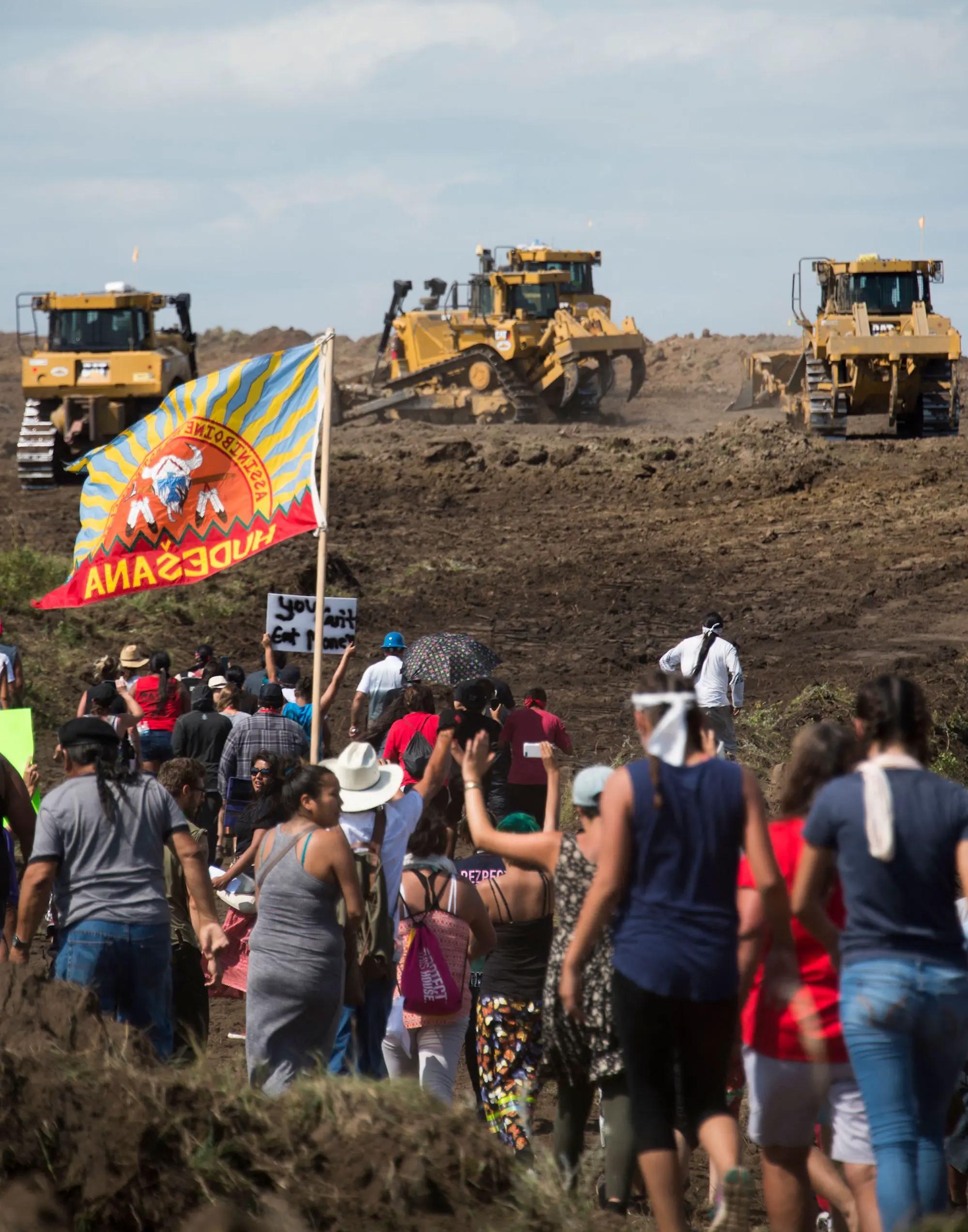 Robyn Beck / AFP via Getty Images
Robyn Beck / AFP via Getty Images
Up until October 2023, Energy Transfer claimed that Greenpeace also committed defamation when it said the pipeline would poison the Standing Rock Sioux Tribe’s water and that the pipeline would catastrophically alter the climate. In order to prove those claims, Energy Transfer would have to turn over internal documents to show how safe the pipeline really was.
However, the company sought to avoid handing over the pipeline safety records and dropped the claims. But Greenpeace didn’t drop its requests for the files — and as they continued to fight about it, some documents became public record.
A report commissioned by Greenpeace, based on field reports and completed in January 2024, found that Energy Transfer’s contractors allowed 1.4 million gallons of drilling mud to disappear into the hole they bored under the riverbed. Drilling mud is a clay and water mixture combined with chemical additives, used to lubricate a drill and carry away fragmented earth. Oil companies usually describe drilling mud as non-toxic, but at times it has been found to include harmful pollutants, and it can hurt delicate ecosystems. The authors, from an engineering firm called Exponent, found that the drilling mud was supposed to flow back out of the tunnel and onto the shore to be stored in an excavated pit. But some of it never did. Enough drilling mud to fill two Olympic-sized swimming pools disappeared into the environment.

Energy Transfer has gotten in trouble in the past for using unapproved additives in its drilling mud. During pipeline construction in Pennsylvania, the company leaked thousands of gallons of drilling mud into wetlands, creating sinkholes and polluting tap water. Energy Transfer’s subsidiary Sunoco pleaded no contest to 14 criminal counts related to the spills. In Ohio, the same year the Dakota Access pipeline was completed, Energy Transfer leaked another 2 million gallons of drilling mud into the environment as it built a different pipeline — some was laced with diesel.
The spill described in the Exponent report was news to the Standing Rock Sioux Tribe, despite its years of raising questions and concerns about pipeline safety. So in October 2024, when the tribe filed its latest lawsuit against the Army Corps, the lawyers cited the drilling mud report as one of many reasons that the pipeline should finally be shut down. Standing Rock’s lawsuit was dismissed in March, although the tribe has appealed.
Energy Transfer alleged that Greenpeace committed defamation by accusing the company of deliberately destroying sacred sites. At the heart of that claim is the word “deliberate” and whether or not, on September 3, 2016, the company intended to destroy the sites. Court documents, public records, and testimony at trial paint a hazy picture of just how those sites were handled.
Tim Mentz’s survey began by Tuesday, August 30, and lasted through Thursday, September 1. That same week, Energy Transfer emailed police to inform them that their construction crew was moving east toward the river, according to a record displayed during the trial. Because of the company’s concerns about protests, sharing construction information with police was a routine practice at the time. The company’s schedule, which it outlined in an email, suggested that the bulldozers wouldn’t arrive in the area with the sacred sites until after September 8.
On September 2, 2016, after Mentz identified the sites, Mike Futch, the project manager for the North Dakota section of the Dakota Access pipeline, sent out his construction manager and a security guy to investigate. “We concluded that the features that Mr. Mentz had identified were outside the limits of the disturbance that we had planned,” Futch said on the stand.
According to Futch, construction crews were able to avoid any stones on the edge of the right-of-way. That analysis, Futch said, allowed him to sidestep calling in the company’s archaeology specialists. The company saw no reason to call the Standing Rock Sioux, either.
Energy Transfer’s bulldozers arrived at the site the next morning — Saturday, September 3, on Labor Day weekend — more than six days earlier than what it had indicated in the schedule sent to police days before. Public records obtained from the Morton County Sheriff’s Office confirm that that morning, the company moved its bulldozers at least 15 miles east to the area that Mentz had been working in.
That the bulldozers were moved out of order on a holiday weekend is a key reason the tribe and water protectors believe that Energy Transfer deliberately destroyed the sites. So exactly when Energy Transfer decided to bulldoze the area matters.
“Yes, we did advance and do some out of sequence work,” Futch told the court. Not because of the sacred sites, he said, but only to get ahead of a powwow planned for the area: The crews wanted to be out of way before new people arrived on top of the protesters already present.

Futch said several law enforcement officers, including Morton County Sheriff Kyle Kirchmeier, were notified of the change in plans — something Kirchmeier denied, saying he was unaware the bulldozers would be in that area. Normally, he added, his office was notified of construction plans, but not this time.
The dog handlers were surprised, too, according to police reports obtained from the sheriff’s office. The owner of Frost Kennels, Bob Frost, told police that Energy Transfer had asked the company to bring the dogs out around mid-September when a ruling in Standing Rock’s lawsuit against the Army Corps was expected. The security workers anticipated that the dogs would be patrolling a fence around a construction site, and one worker said he thought they’d be joined by two police officers per dog handler. Instead, Bob Frost found out in the middle of Friday night, only hours after Earthjustice filed the coordinates, that they needed to show up with dogs the next morning at 10 a.m.
While Energy Transfer’s defamation claim focused on the word “deliberate,” the company has also disputed that there were any sacred sites at risk at all. “Apparently a guy named Mentz came up with a story,” the former Energy Transfer Vice President Joey Mahmoud said in an email at the time.
In court, Gibson Dunn lawyers and the company’s witnesses pointed to a report from the chief archaeologist of the North Dakota State Historic Preservation Office, Paul Picha, who concluded that “no cultural material was observed in the expected corridor. No human bone or other evidence of burials was recorded in the inventoried corridor.”
Picha was deposed by lawyers, but the interview wasn’t shown in court. He said that his assessment didn’t actually mean much about the truth of Mentz’s claims.
“So if the North Dakota State Historic Preservation Society says something isn’t a cultural site, that doesn’t mean it isn’t a cultural site to the Standing Rock Sioux Tribe, correct?” asked one of the lawyers.
“Yes,” Picha replied.
Energy Transfer’s own archaeology contractor, Gray & Pape, concluded in a separate report, obtained via a public records request, that four of Mentz’s sites were in the path of the pipeline. The archaeologist, Jason Kovacs, reported that those four stones didn’t show signs of being archaeological sites and that there was no ground disturbance there — although one of the stones was covered in dirt.
However, Kovacs clarified what he meant when he was deposed for trial. He told lawyers, “I’m not qualified to assess what is cultural property or not,” and he confirmed that the company had no Indigenous specialists on staff.
“The vast majority of the times, we have no access to the tribal perspective,” said Kovacs. “My assessment of an archaeological site has to be on the archaeology itself, and that’s where I leave it. It may have further significance, but that’s, you know, not archaeological.”
His testimony was never aired for the jury.
Energy Transfer’s lawyers presented what appeared to be its key evidence that Greenpeace International defamed the corporation. In November 2016, an organization called BankTrack asked banks to divest from the Dakota Access pipeline, noting that the company’s personnel deliberately desecrated documented burial grounds and other important cultural sites. The letter was signed by 500 organizations, including Greenpeace International.
“Does Greenpeace International stand by that?” Trey Cox asked Mads Christenson, Greenpeace International’s executive director.
“We believed that to be true at the time, and we still do,” Christensen replied.
“Wouldn’t you have to talk to Energy Transfer to understand their state of mind?” asked Cox.
“Our understanding was very clear from the Standing Rock Sioux Tribe and allies that a number of concerns about sacred sites had been pointed out that were later desecrated and destroyed.”
Christensen added, “If you’re aware of the fact and still go ahead, then it must be deliberate.”
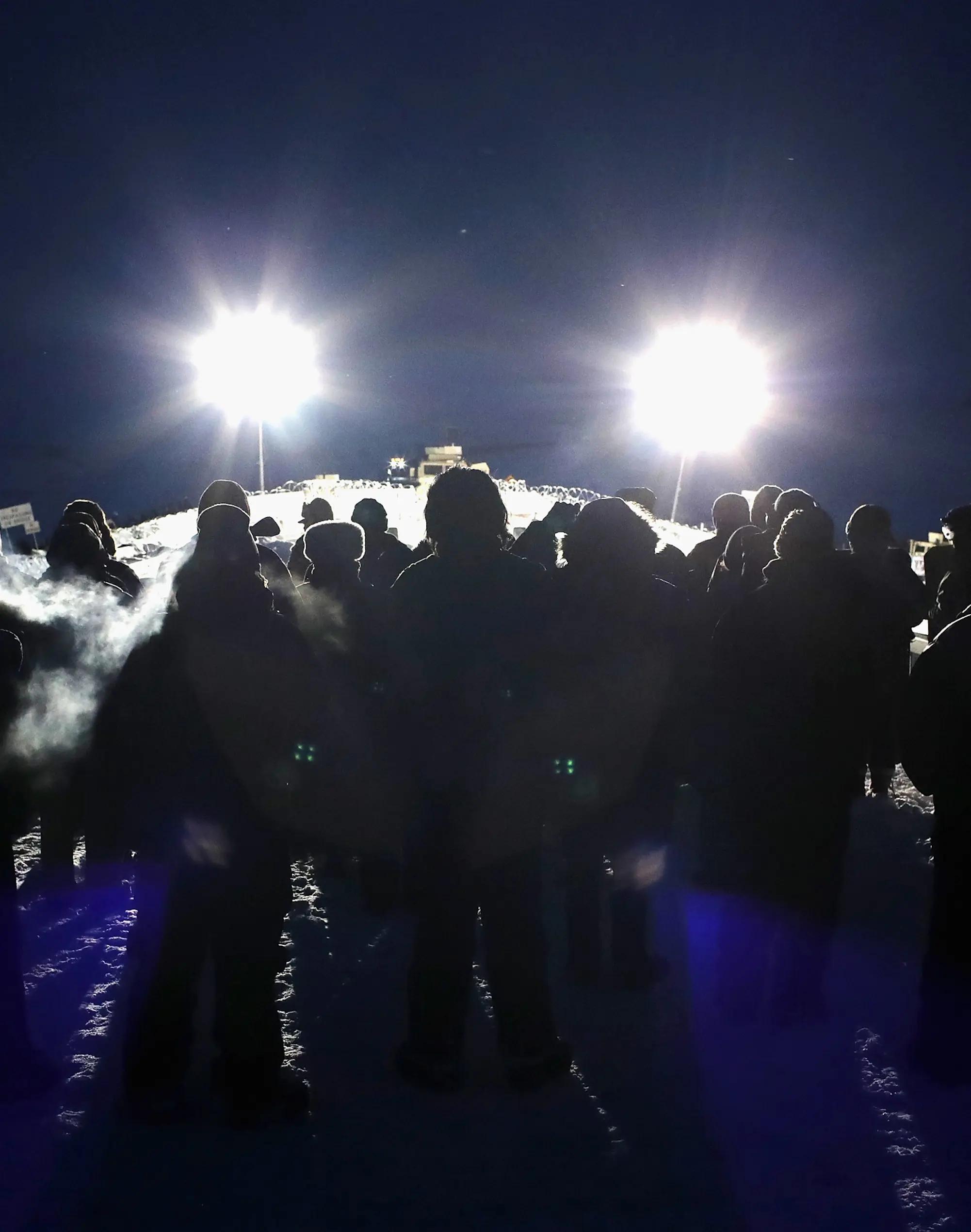 Stephen Olson / Getty Images
Stephen Olson / Getty Images
“Do you have any personal knowledge about anything Greenpeace did at all in relation to the protests?” a lawyer asked.
“No,” said Kelcy Warren, Energy Transfer’s board chair and largest shareholder — who was CEO when the Dakota Access pipeline was constructed.
Warren took the stand on March 13, via a pre-recorded video deposition. It was the final day of testimony.
While the board chair had no recollections about Greenpeace, he did have memories about the Standing Rock Sioux Tribe. In 2016, Warren approached Chairman Dave Archambault to make a deal. “I went there with the intention of working out a financial transaction,” Warren said. Long before Greenpeace went to court, before the conspiracy lawsuits began, and before Trump’s executive order greenlighting the pipeline, Energy Transfer tried to pay off the tribe.
At the height of the protests, Warren and Archambault sat down to talk. “I said, ‘David, I’m here to make a deal with you. Let’s go. Do you want cash? What do you want?’” Warren first offered Archambault the ranch the company bought, the one that held the sacred sites identified by Mentz. “We could build you a whole new school on your reservation. Let’s make a deal,’” Warren urged.
“And he says, ‘I can’t do it,’” Warren recalled. “He made it very clear he could not accept any offer from me that involved them backing down.”
“It was clear to me that he had struck a deal with the devil,” Warren said.
“And the devil being Earthjustice?” the lawyer replied.
“Yes,” said Warren.

Earthjustice is a nonprofit public interest law organization that represented the Standing Rock Sioux Tribe in the early part of its court fight against the Army Corps of Engineers. It is not connected to Greenpeace: It is not an affiliate, a subsidiary, or even funded by the organization.
“They’re scumbags,” Warren said, of Earthjustice.
“I read between the lines, and I believe that they made a deal, and Archambault couldn’t make a deal with me,” he continued.
In a statement, Archambault explained the meeting. “I was there to discuss safety — not to negotiate an end to the protests.” When Warren asked what it would take to stop the movement, Archambault said, “I explained that it was no longer in my control. The fight against the pipeline had become much bigger than Standing Rock; it was about Indigenous rights and the long history of injustice faced by our people.”
In court, the lawyer asked, “Nothing was said about Greenpeace during that meeting, was it?”
“Not that I recall,” Warren replied.
In Warren’s understanding, the Standing Rock Sioux were the entity to negotiate with when it came to ending the protests and pushing the pipeline through — not Greenpeace. According to his testimony, the tribe’s refusal to take a deal revealed that Standing Rock had sold out to its law firm, Earthjustice — not Greenpeace Inc., Greenpeace Fund, or Greenpeace International.
On the next day of court, during closing statements, Cox revealed the true extent of what Energy Transfer was demanding from the Greenpeace organizations. The lawyers said that $266 million would compensate Energy Transfer for their expenses — but they wanted triple that, in order to set an example.
Two days later, the jury returned its verdict. Greenpeace Inc. was liable for all of the on-the-ground damage claims. Greenpeace Inc. and Greenpeace International were guilty of conspiracy, and all three Greenpeace organizations committed tortious interference, as well as defamation when they made their assertions on police violence, tribal territory, and desecration of sacred sites.
The total damages amounted to over $666 million.
Outside the courtroom, Cox, the Energy Transfer lawyer, posed with a huddle of attorneys from Gibson Dunn. He wore an American flag pin on the lapel of his suit, while his colleagues wore sunglasses. “Greenpeace paid protesters and trained individuals to unlawfully disrupt the construction of the Dakota Access pipeline,” he said. “These are the facts, not the fake news of the Greenpeace propaganda machine.”
He added, “Peaceful protest is an inherent American right; however, violent and destructive protest is unlawful and unacceptable. This verdict clearly conveys that.”
The Greenpeace employees and water protectors looked on, stunned.
Energy Transfer and Gibson Dunn did not provide responses to detailed questions related to the case. Instead, they provided a statement saying that the verdict was a win for North Dakotans who faced disruption and harassment during the protests.
“That the disrupters have been held responsible is a win for all of us,” the spokesperson wrote. “It is also a win for all law-abiding Americans who understand the difference between the right to free speech and breaking the law.”
Greenpeace is preparing to appeal once the court issues a final judgment.
“ What this really is an attempt to do is to destroy the idea of solidarity,” said Deepa Padmanabha, the senior legal advisor for Greenpeace in the U.S., in an interview with Grist and Drilled. “By working together, by uplifting voices, by showing support, by showing up, by communications, you somehow could face hundreds of millions of dollars of lawsuit. Because this idea of a movement, of people working together in solidarity, is actually more powerful than the dollar.”
Asked if the organization regretted not taking the settlement, Padmanabha said, “There was no choice.”
“Is our existence our ultimate mission? Just the existence of an entity?” she asked. “Or is there something in our mission that’s bigger than that?”

The Center for Media and Democracy supported document review for this article.
This story was originally published by Grist with the headline Standing Rock was an Indigenous-led movement. Why did Greenpeace take the fall? on Jul 18, 2025.
This content originally appeared on Grist and was authored by Alleen Brown.
This post was originally published on Radio Free.
This content originally appeared on The Real News Network and was authored by The Real News Network.
This post was originally published on Radio Free.